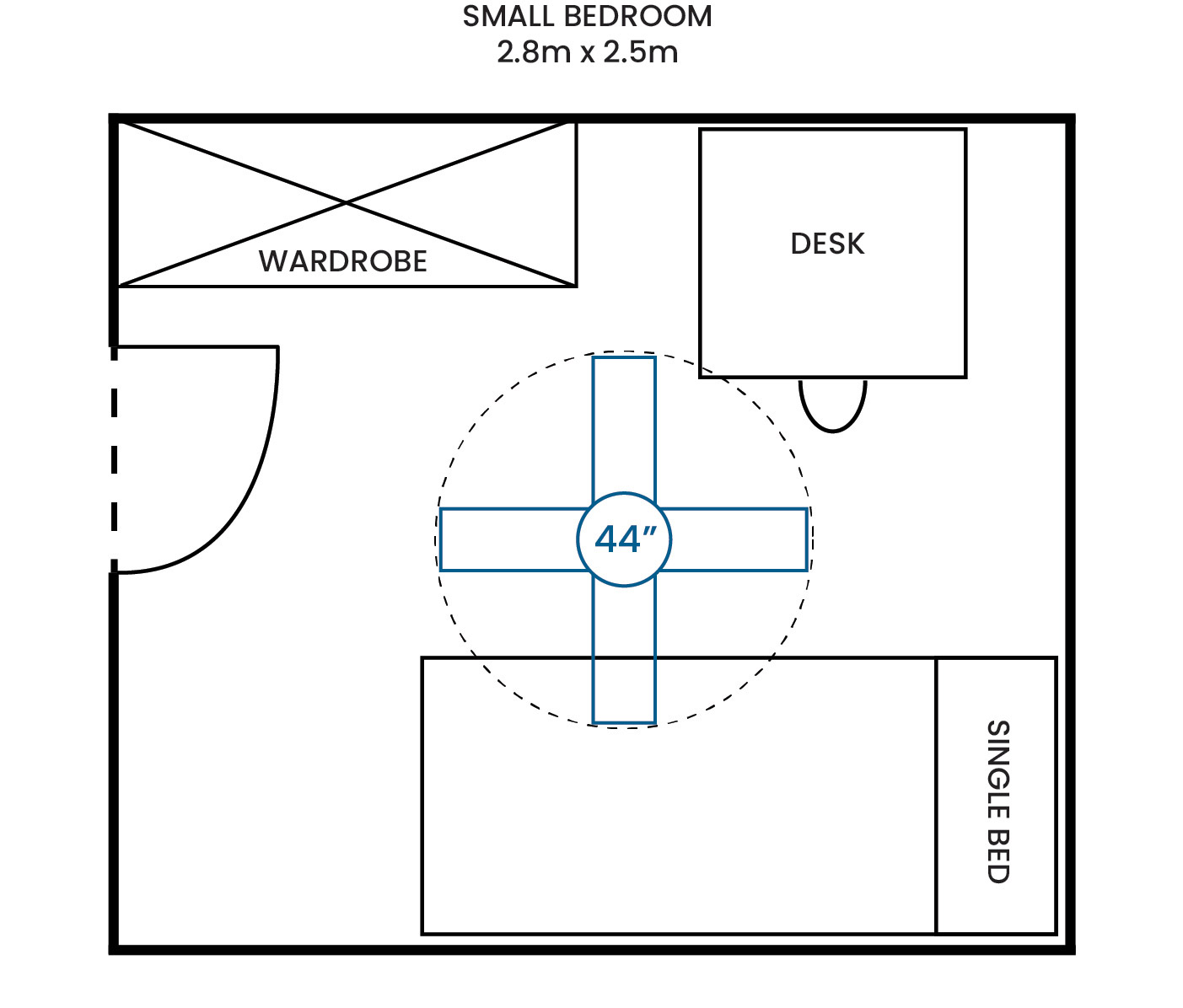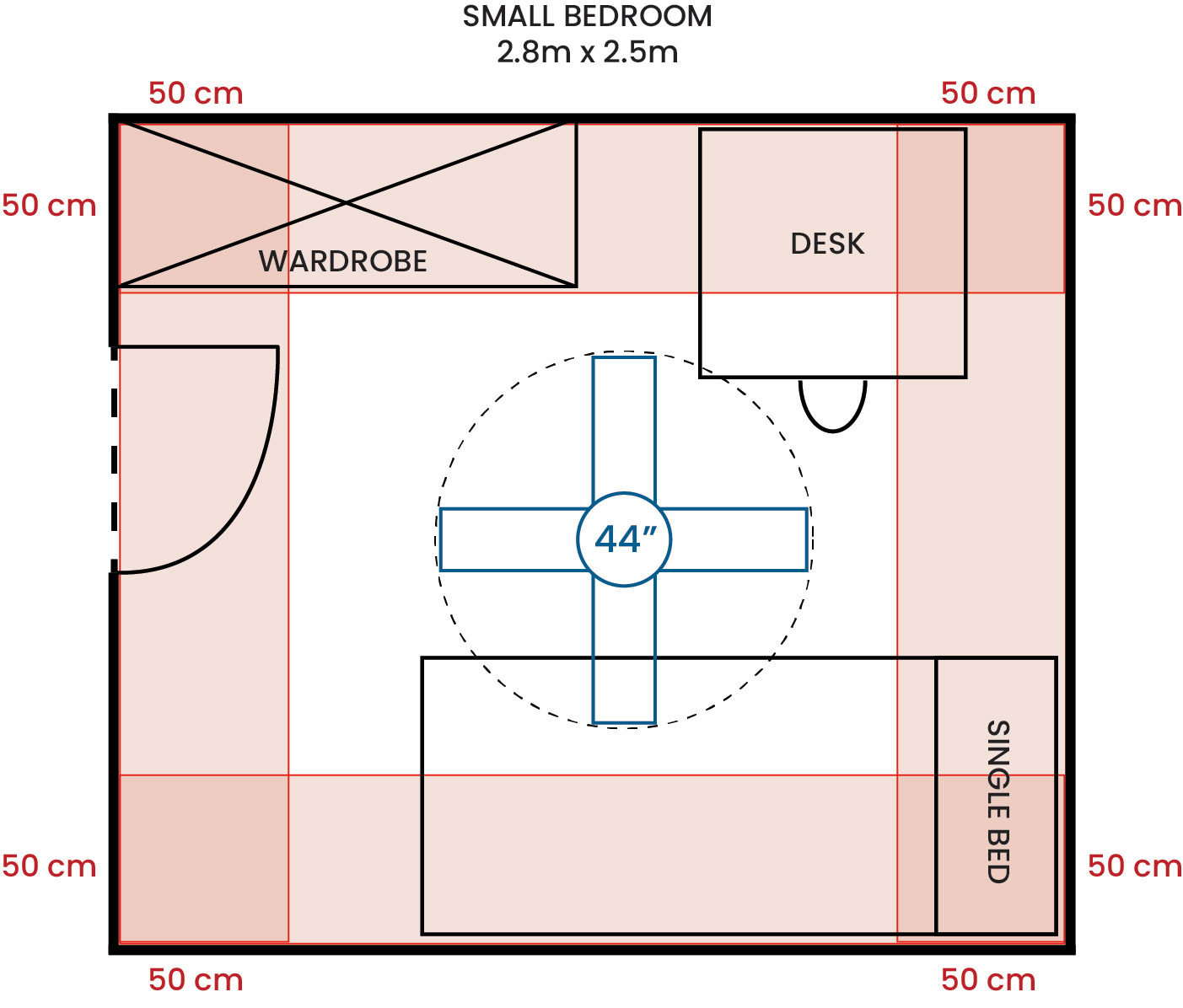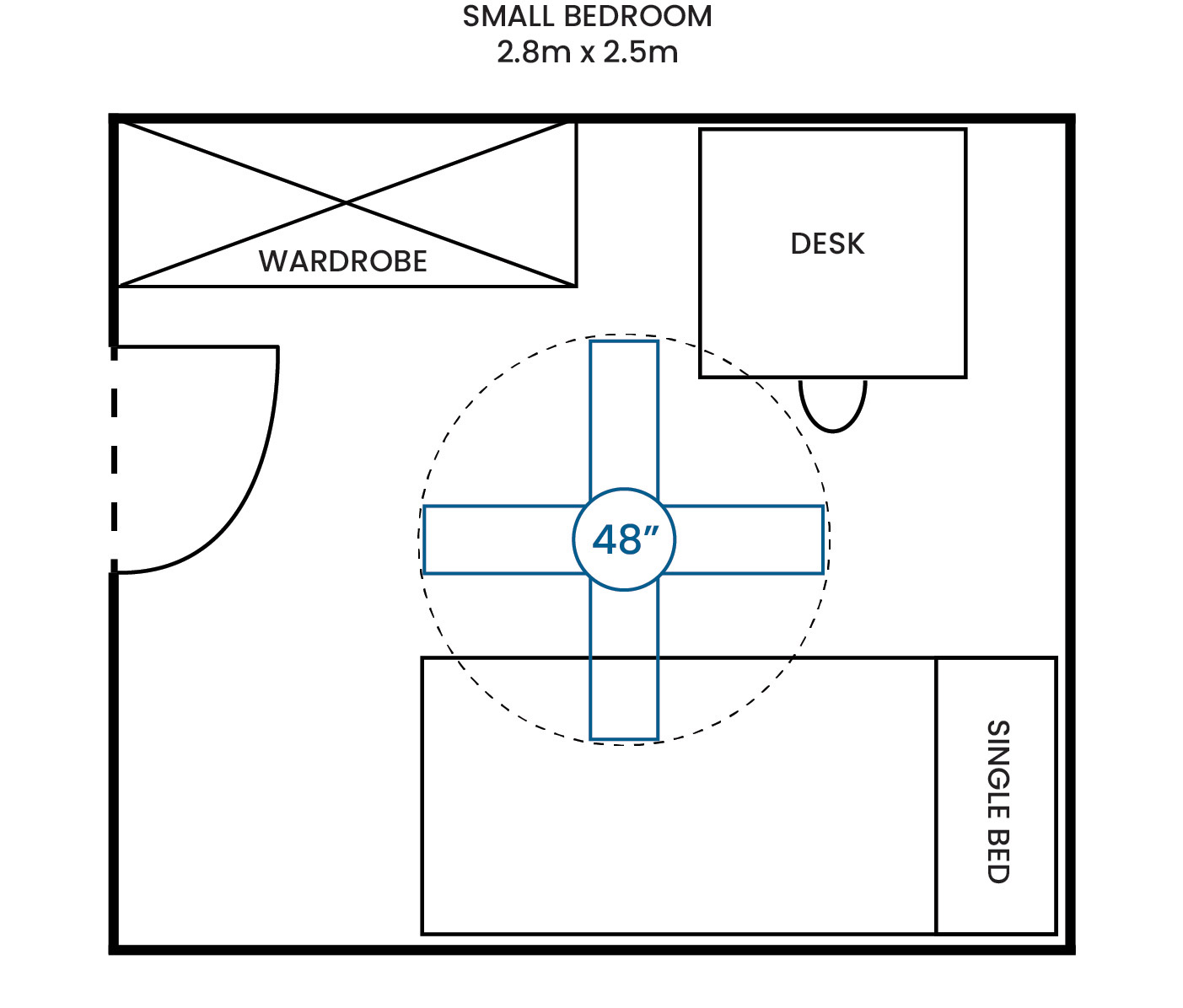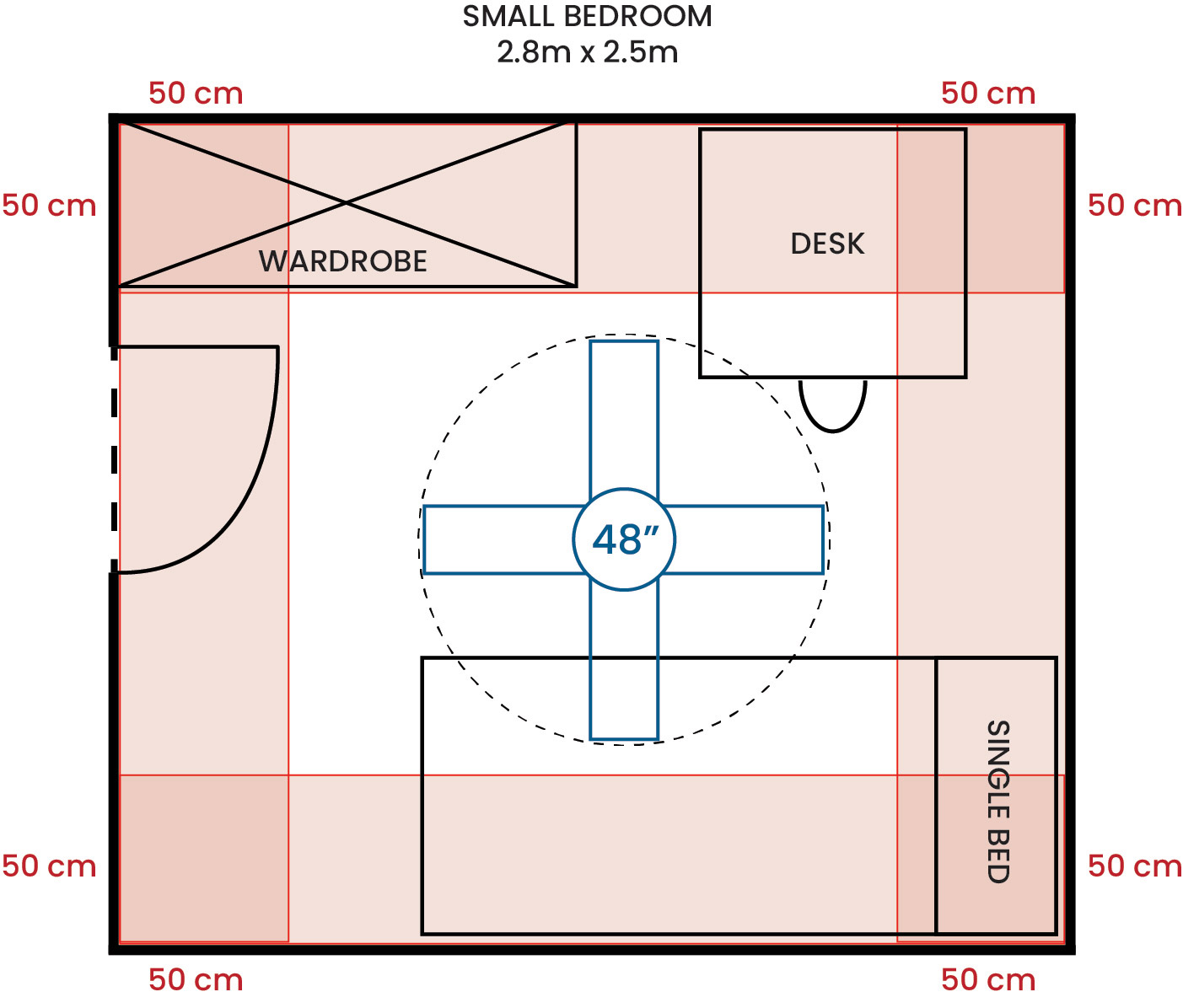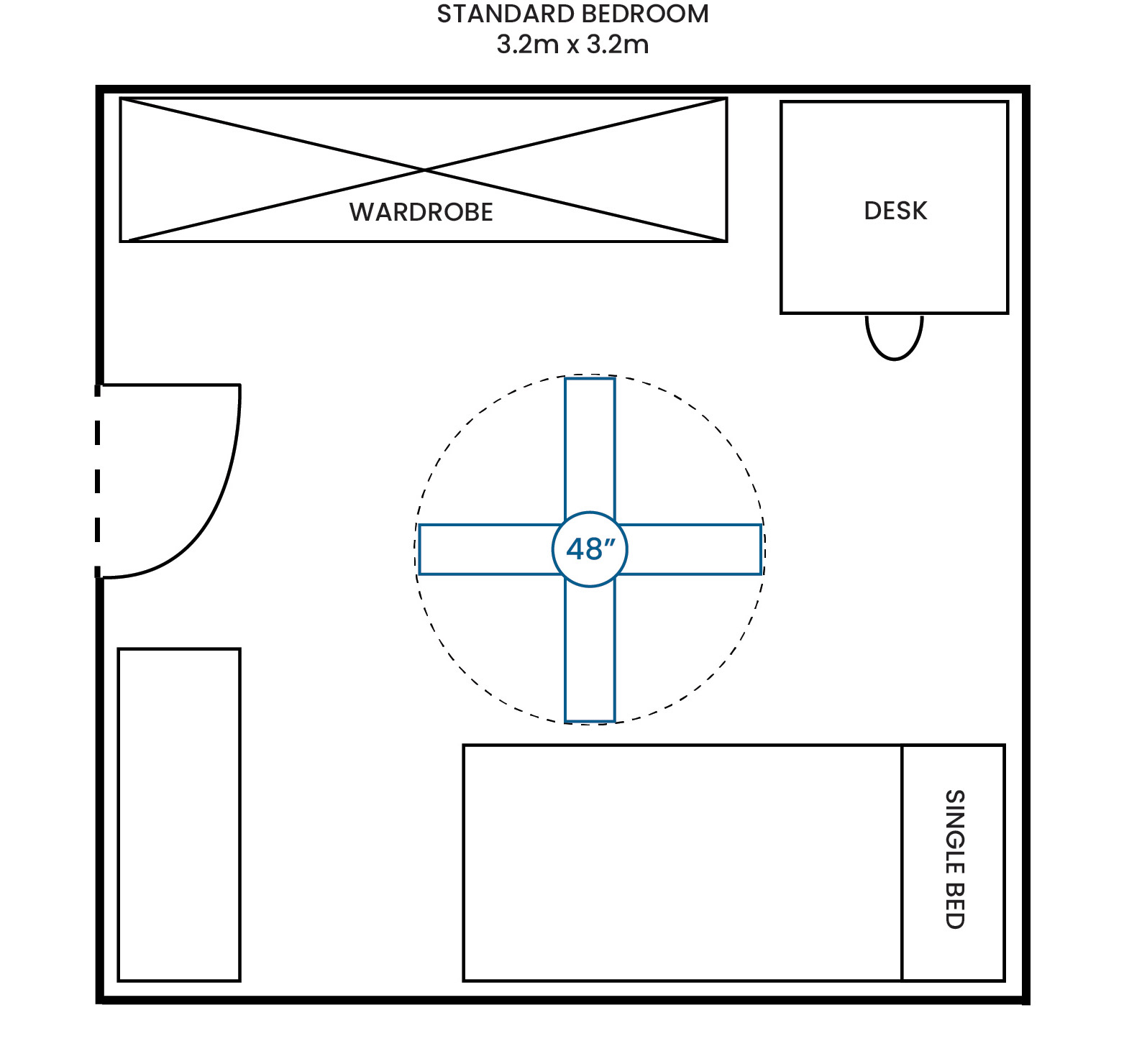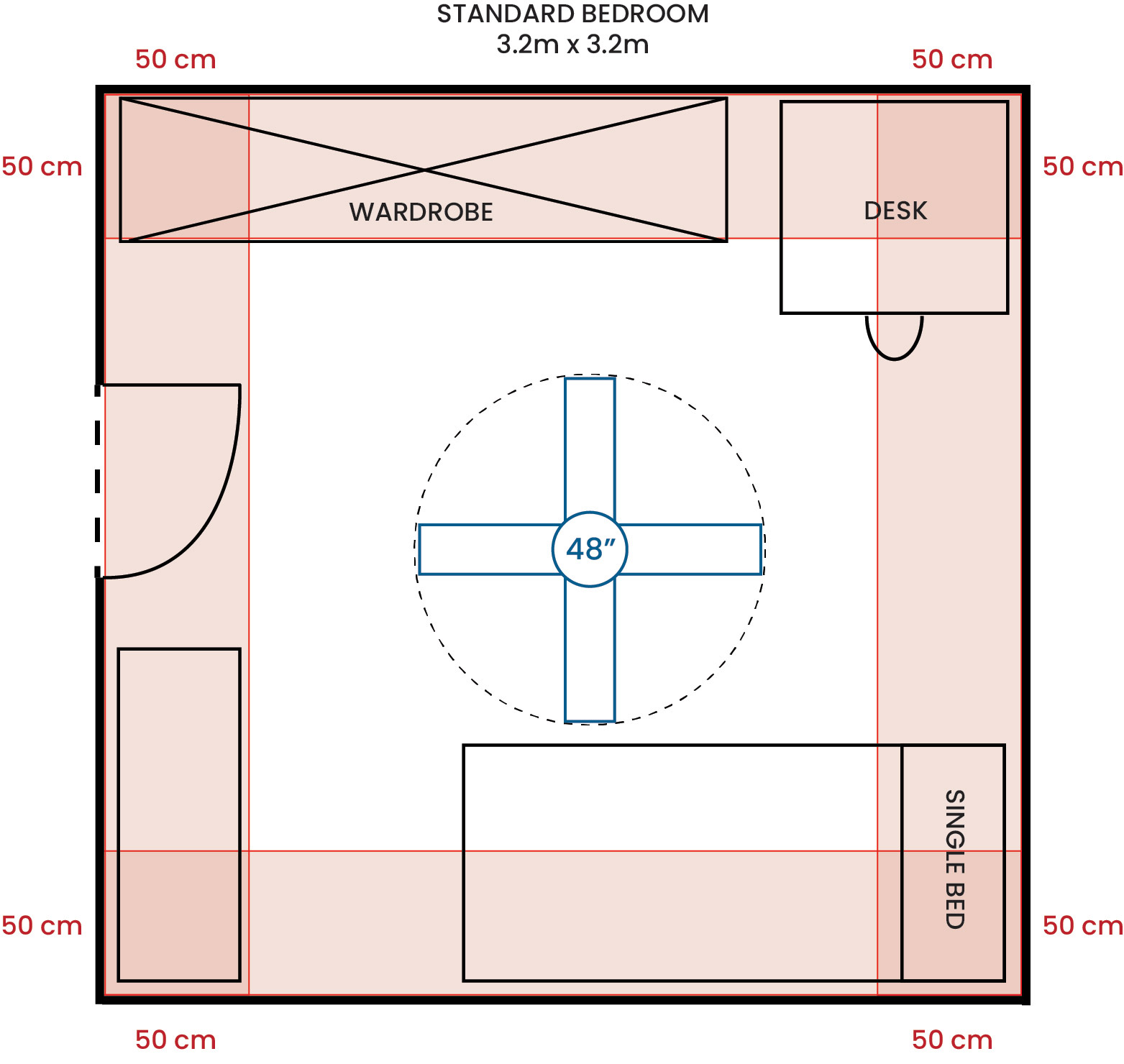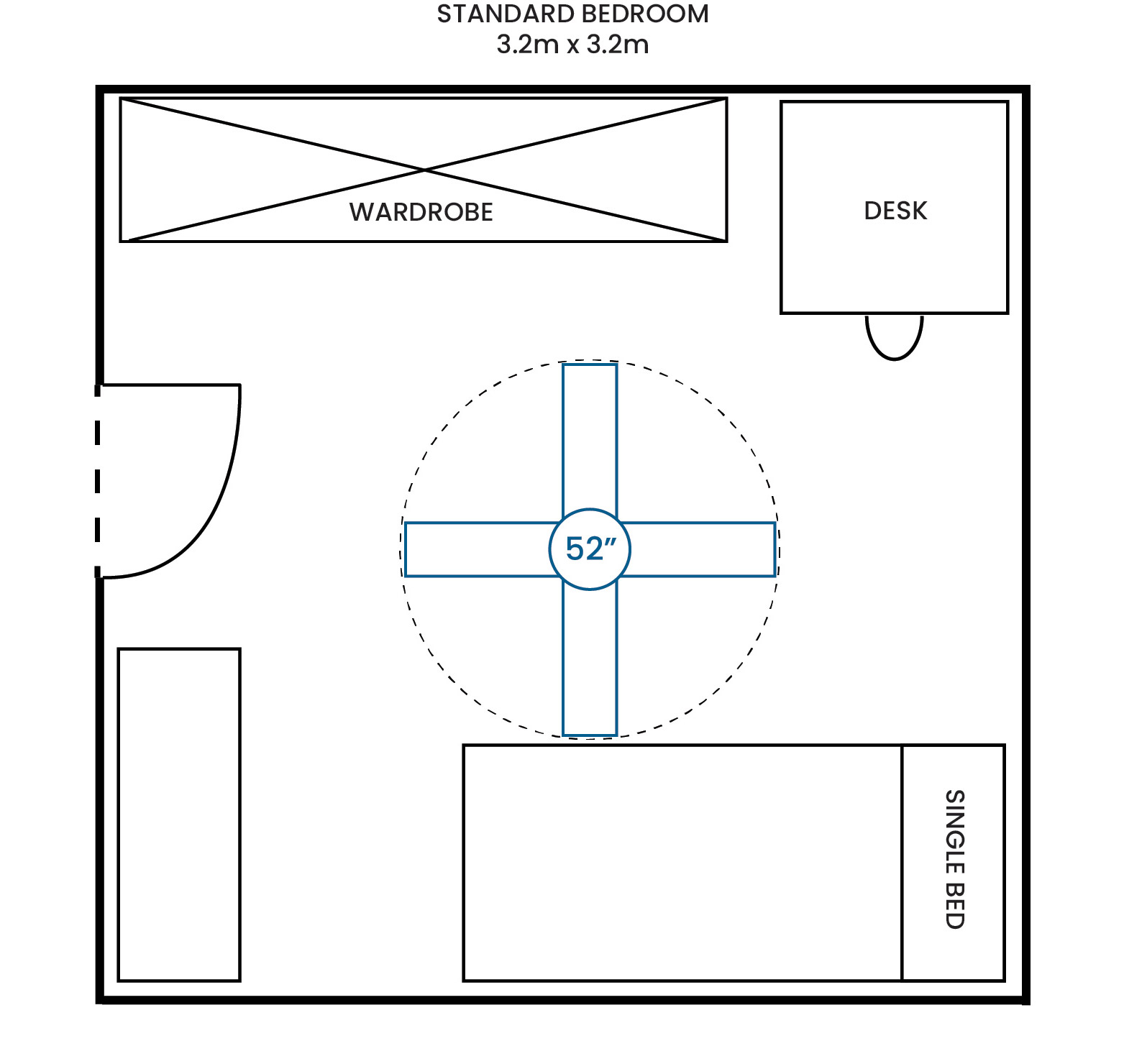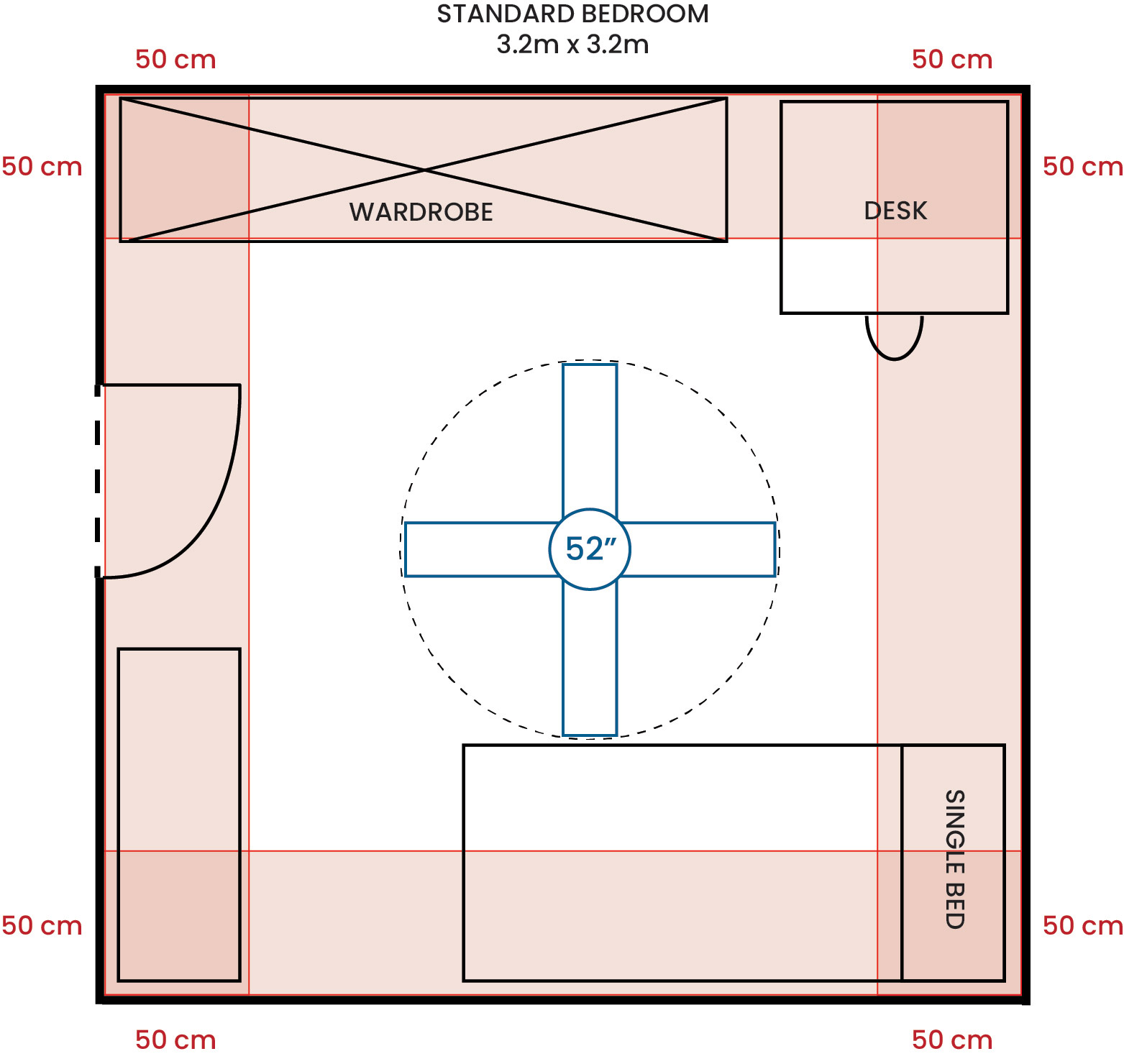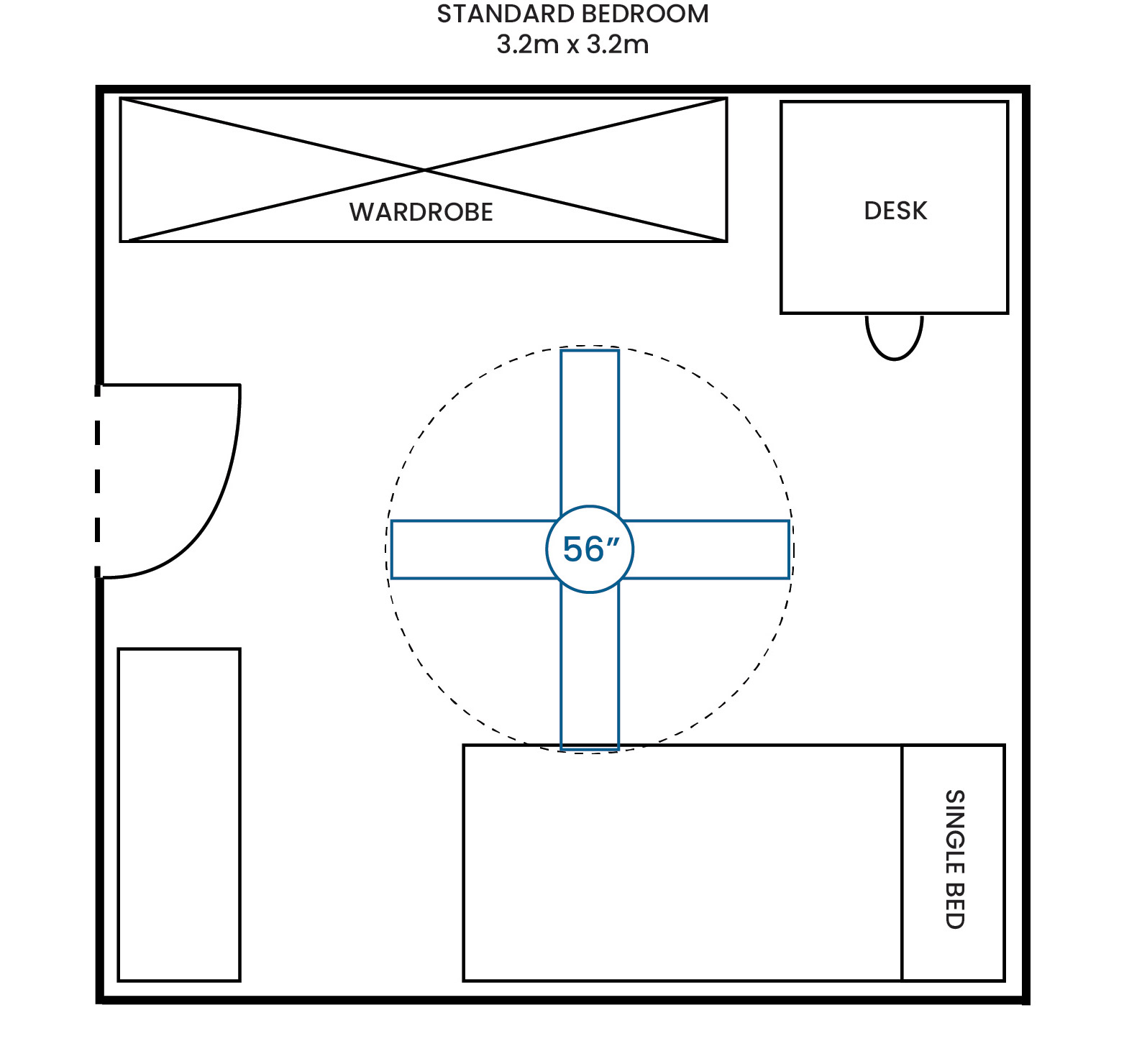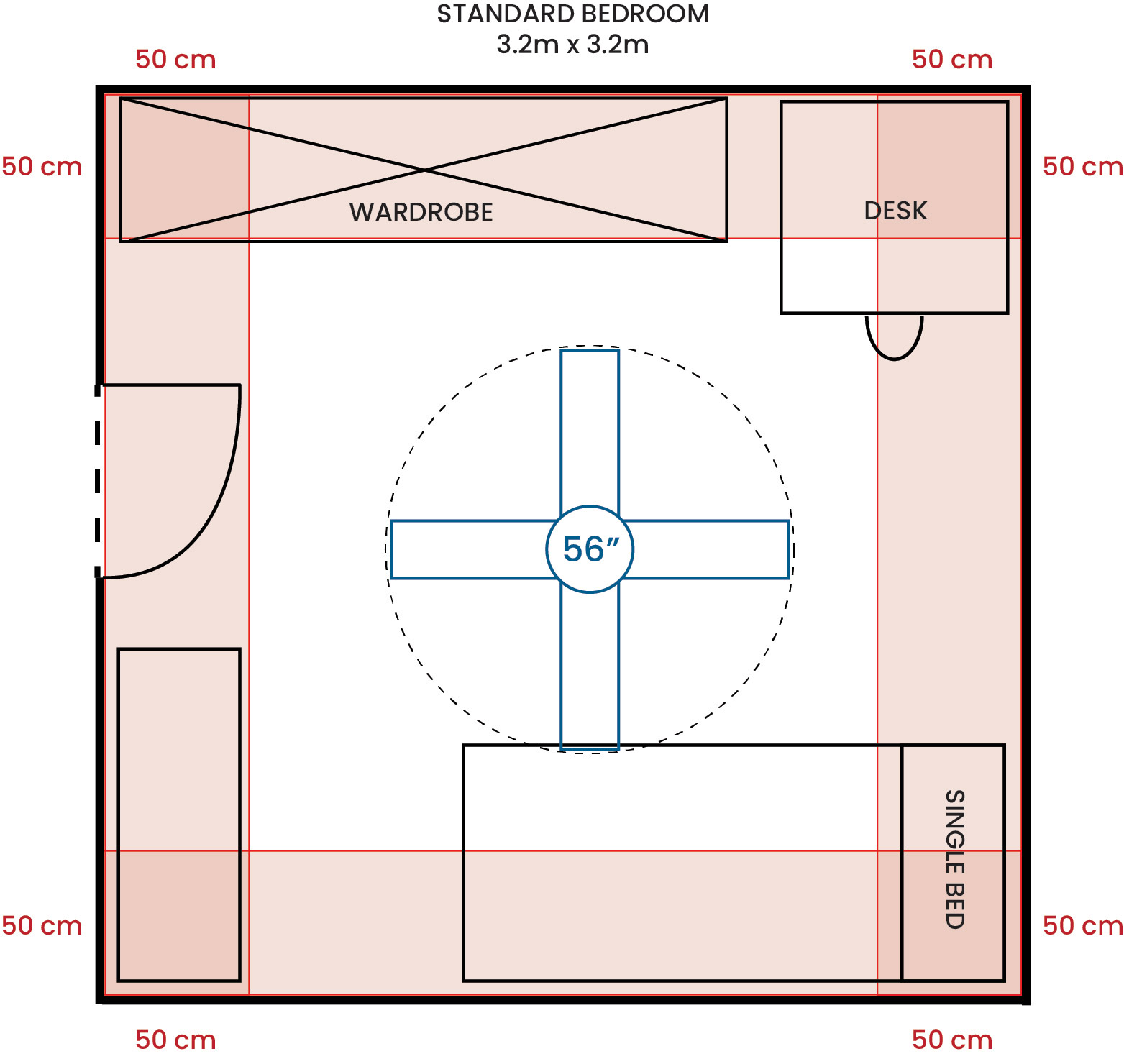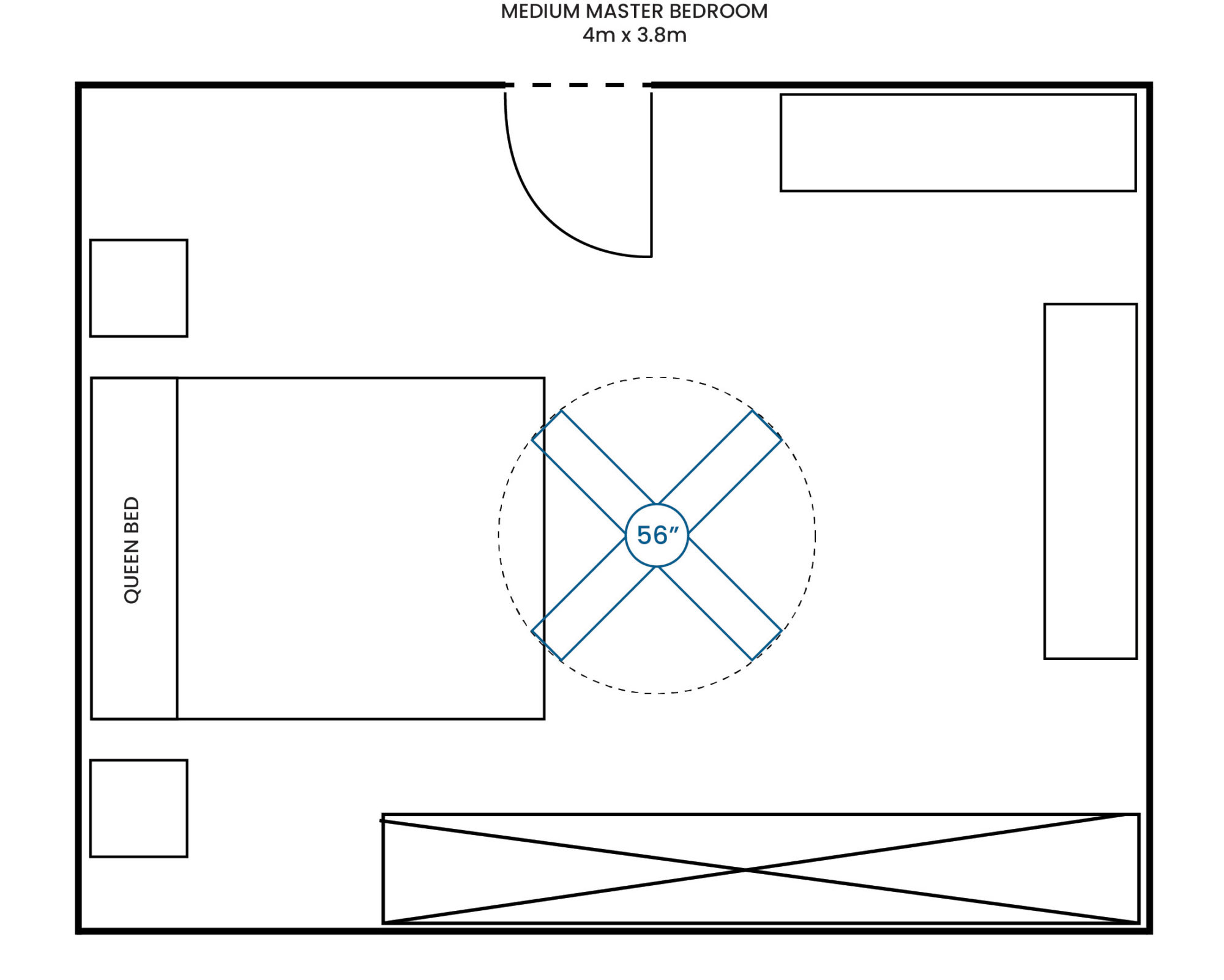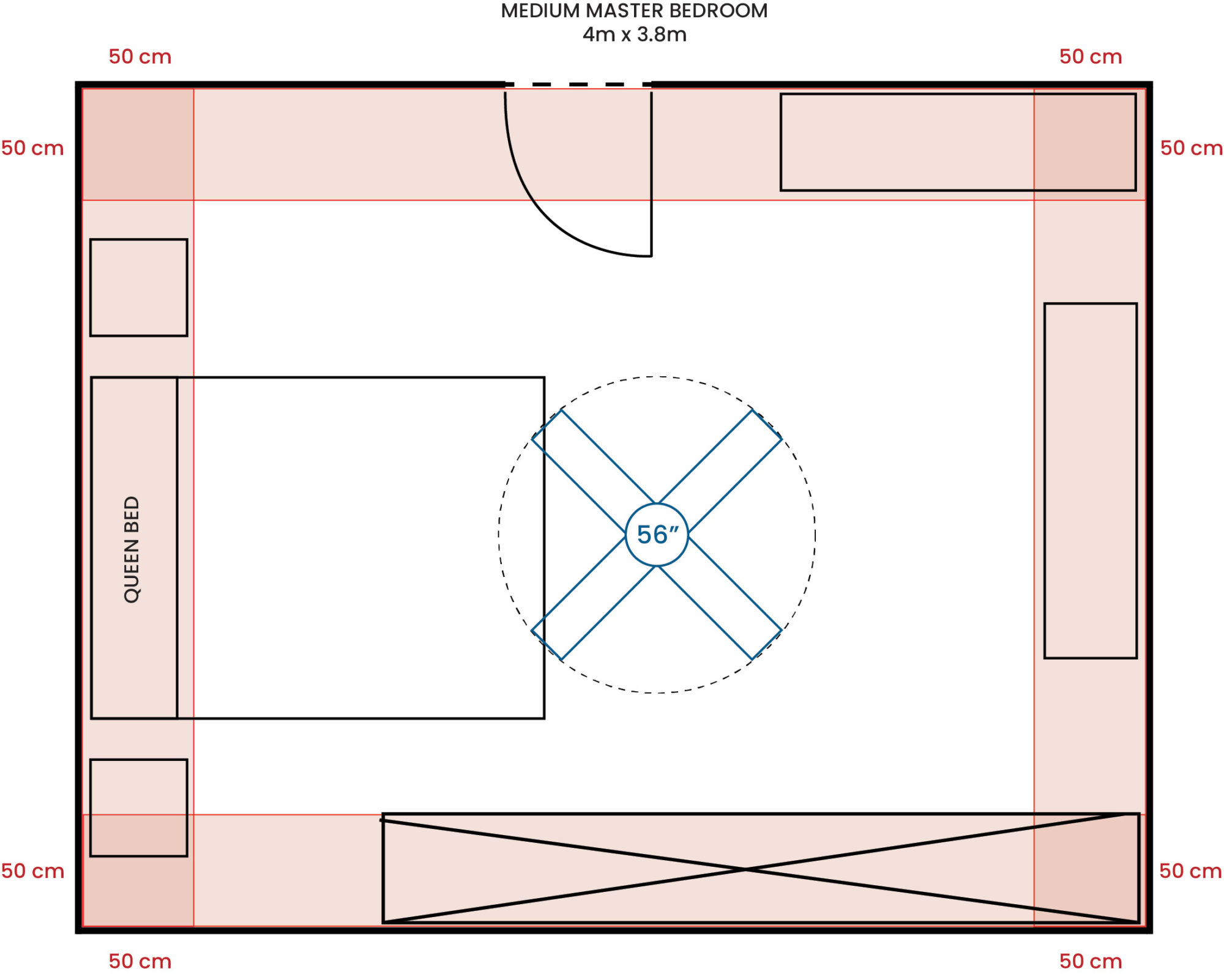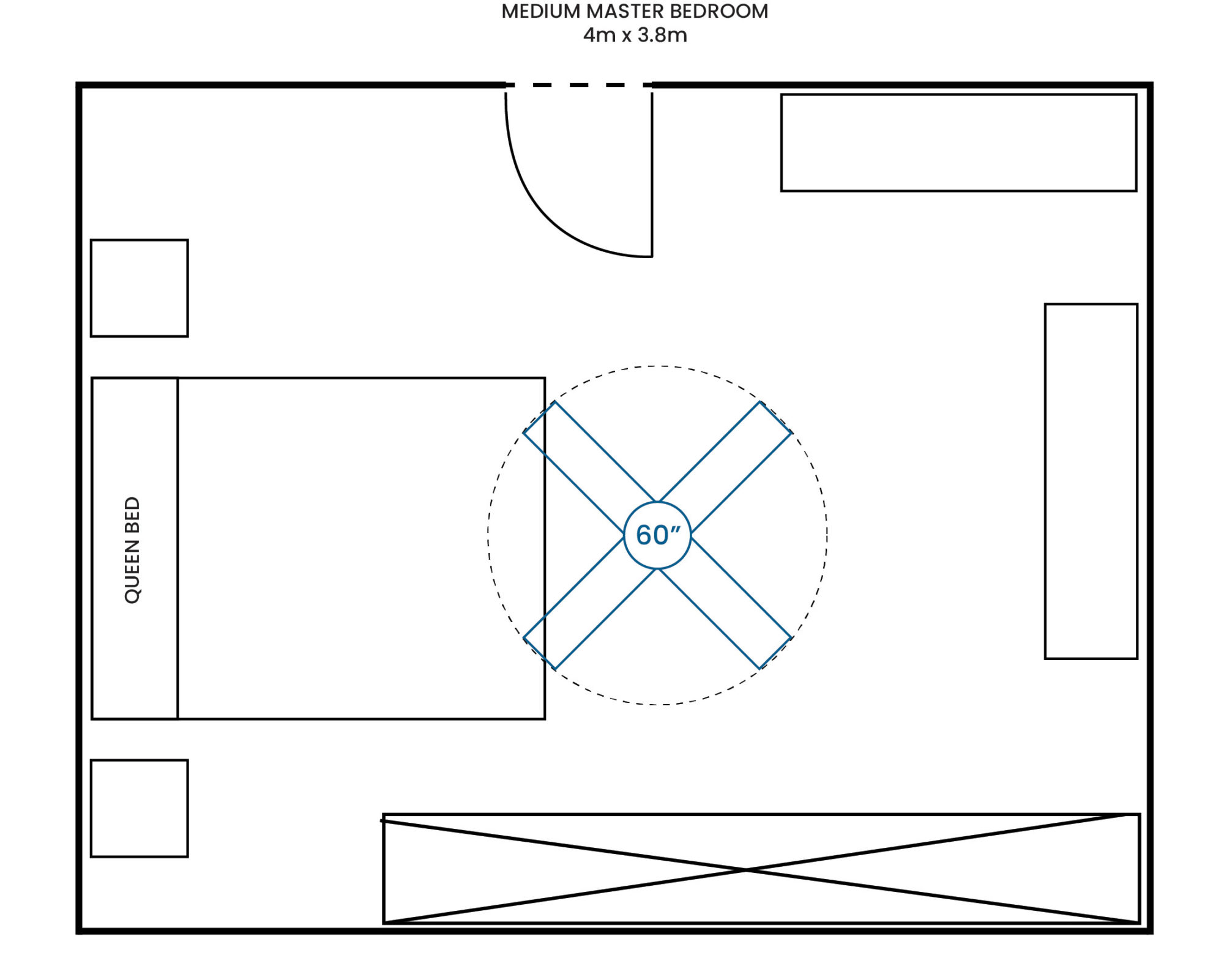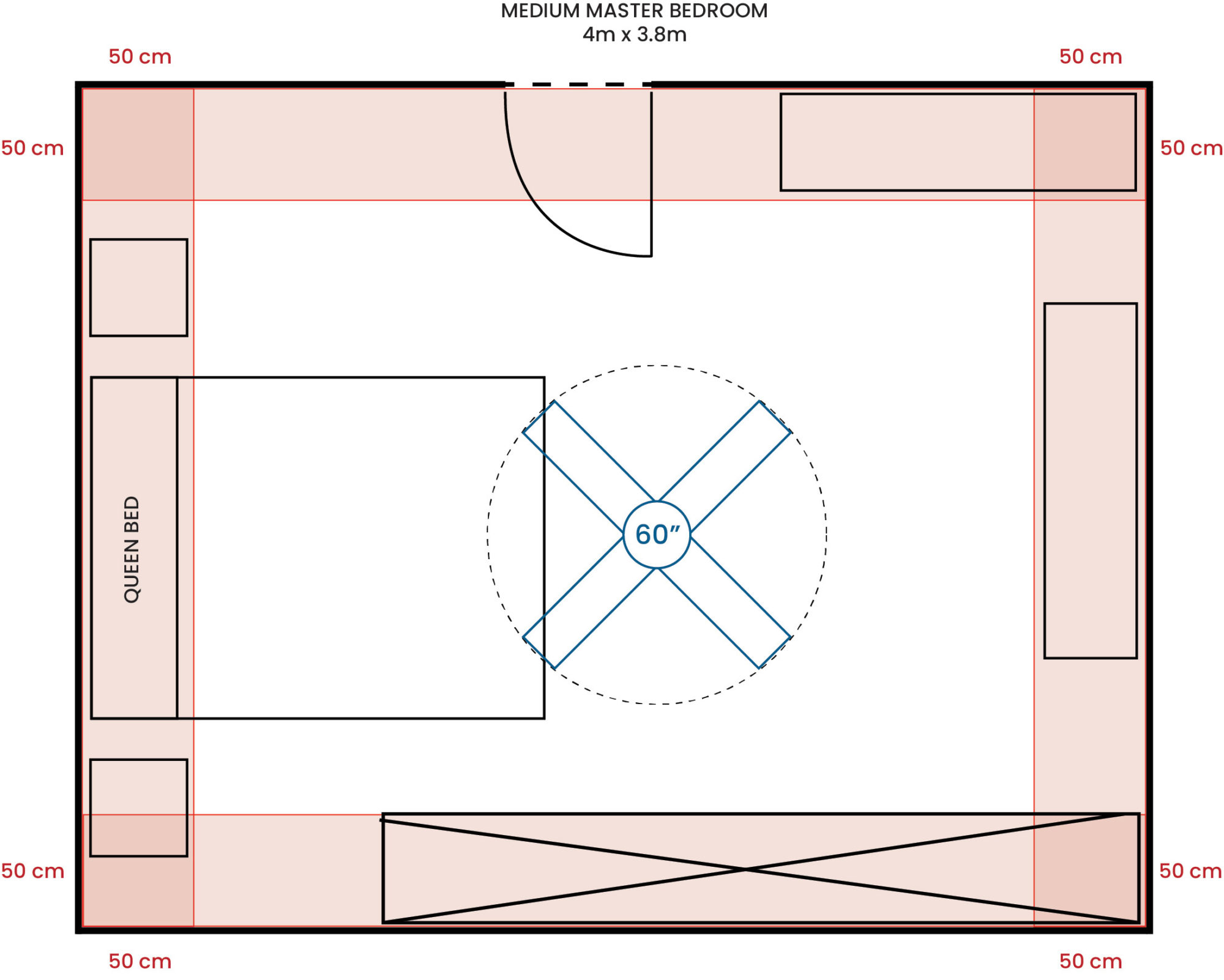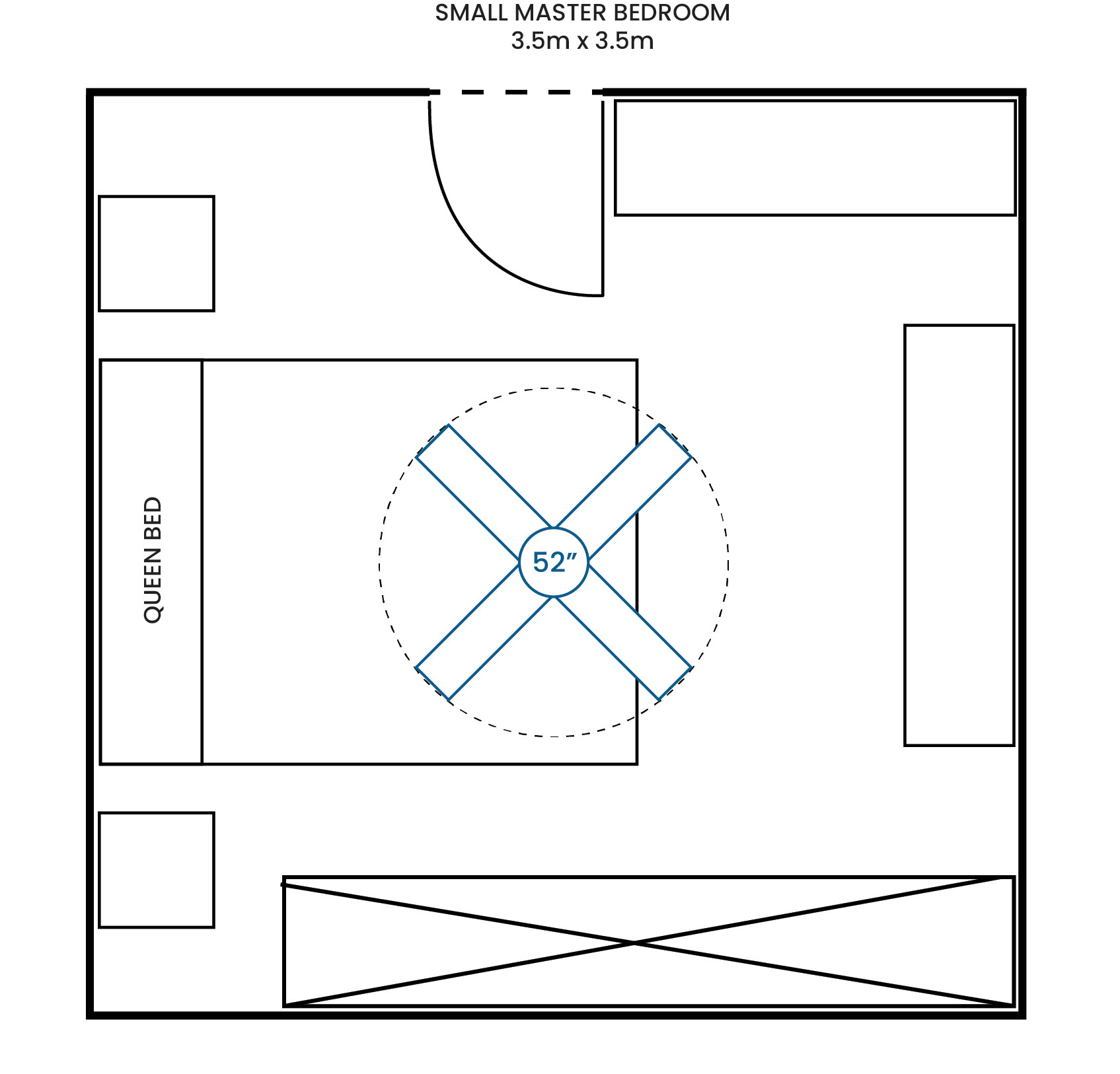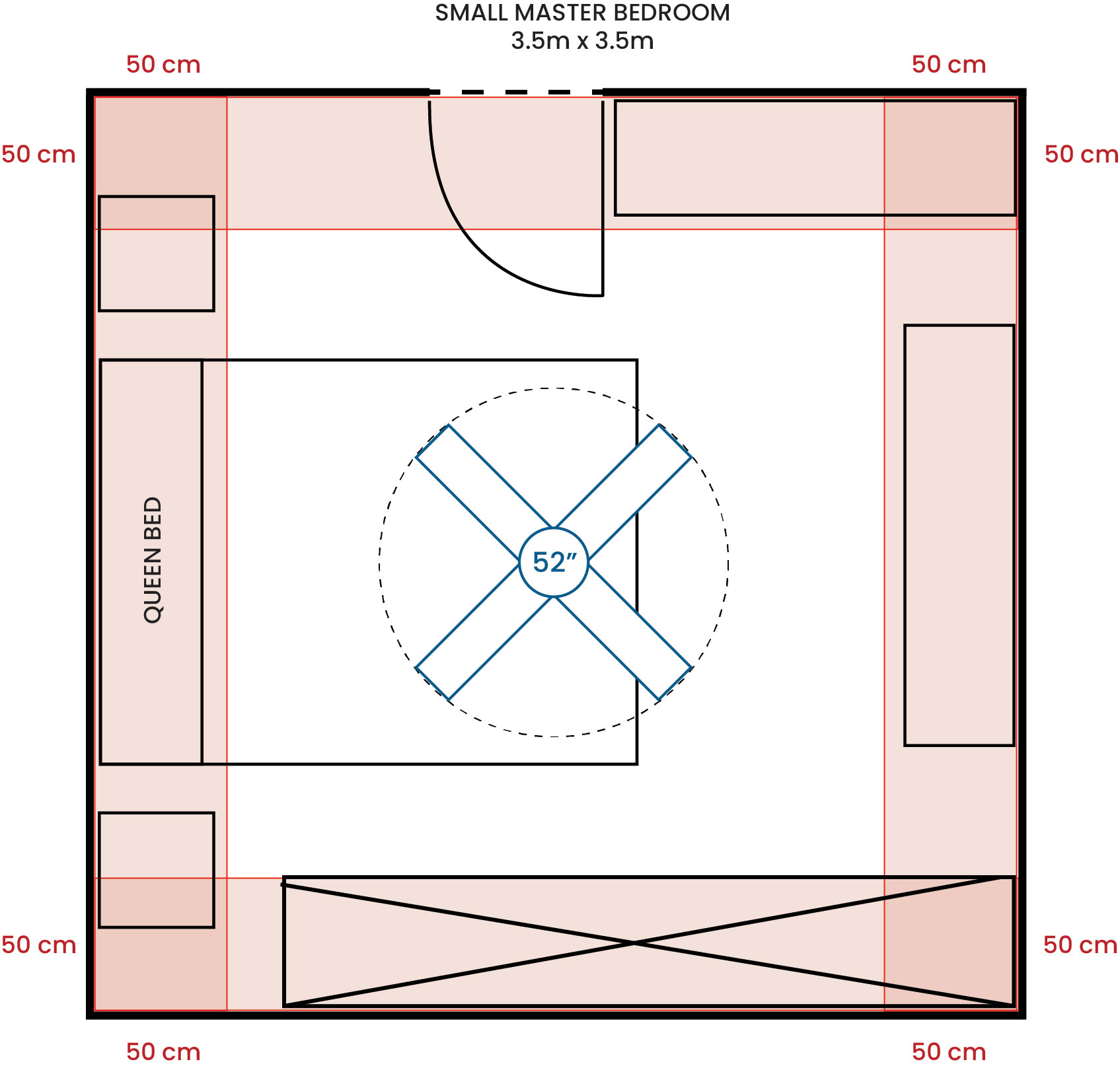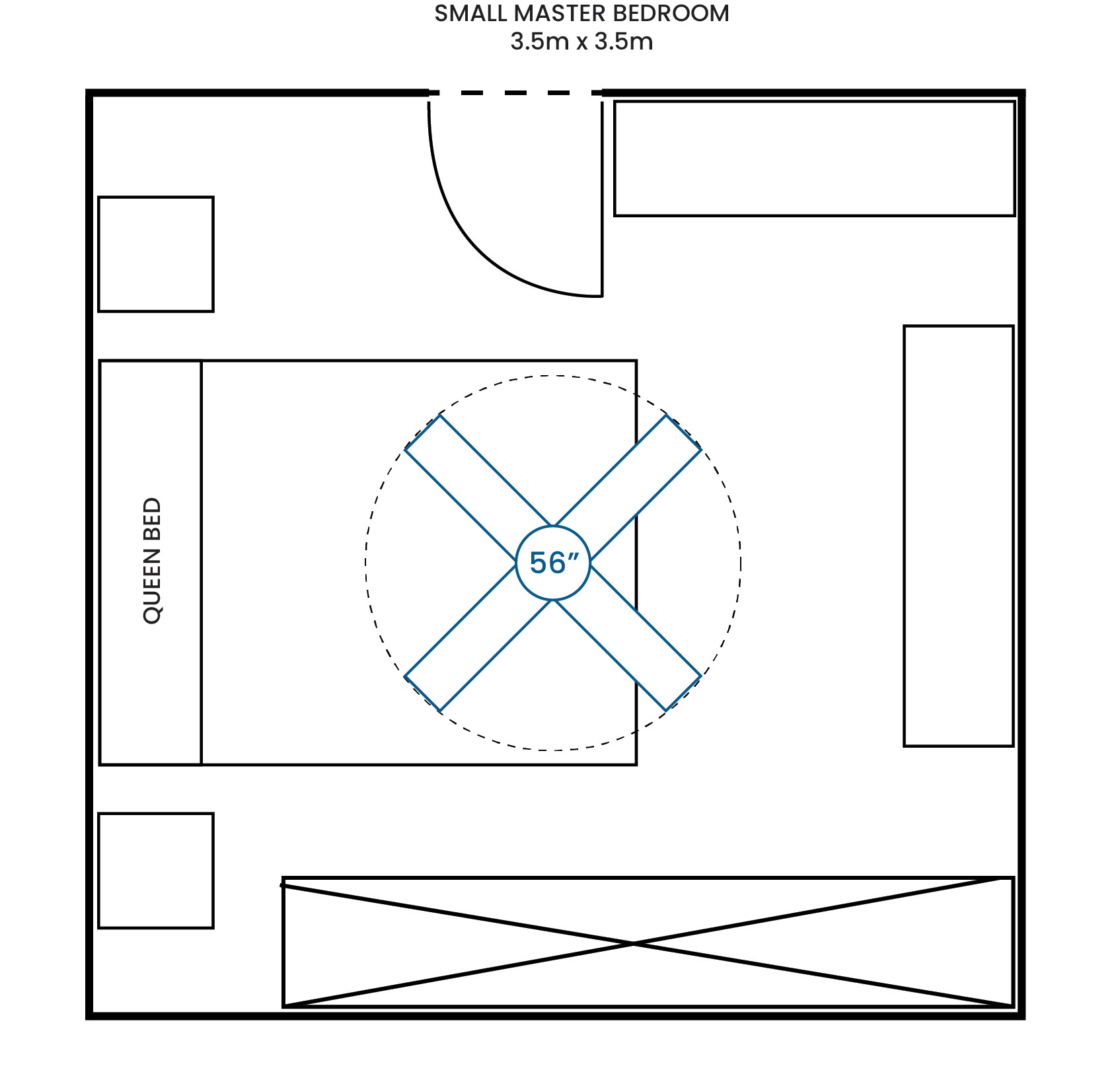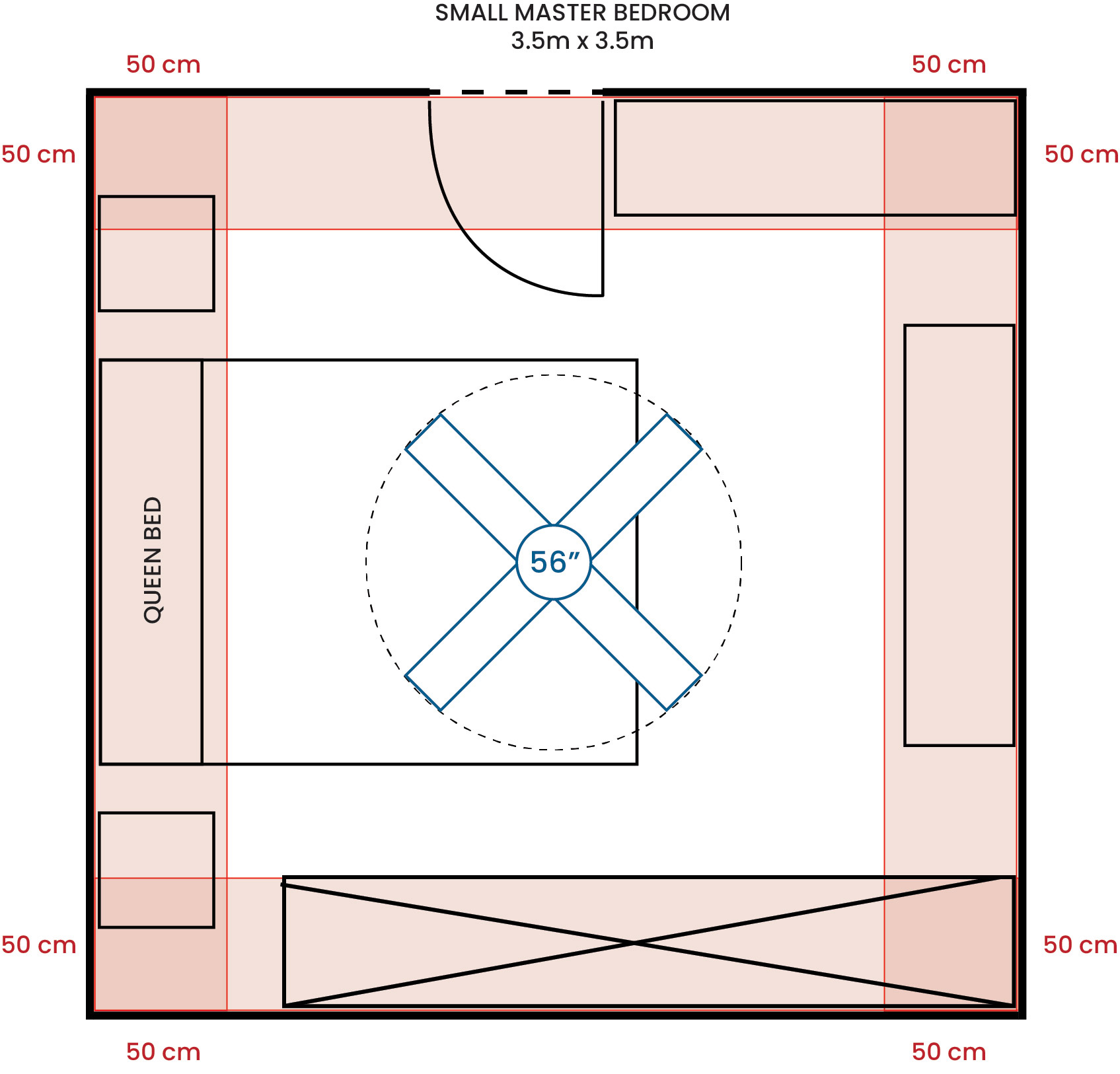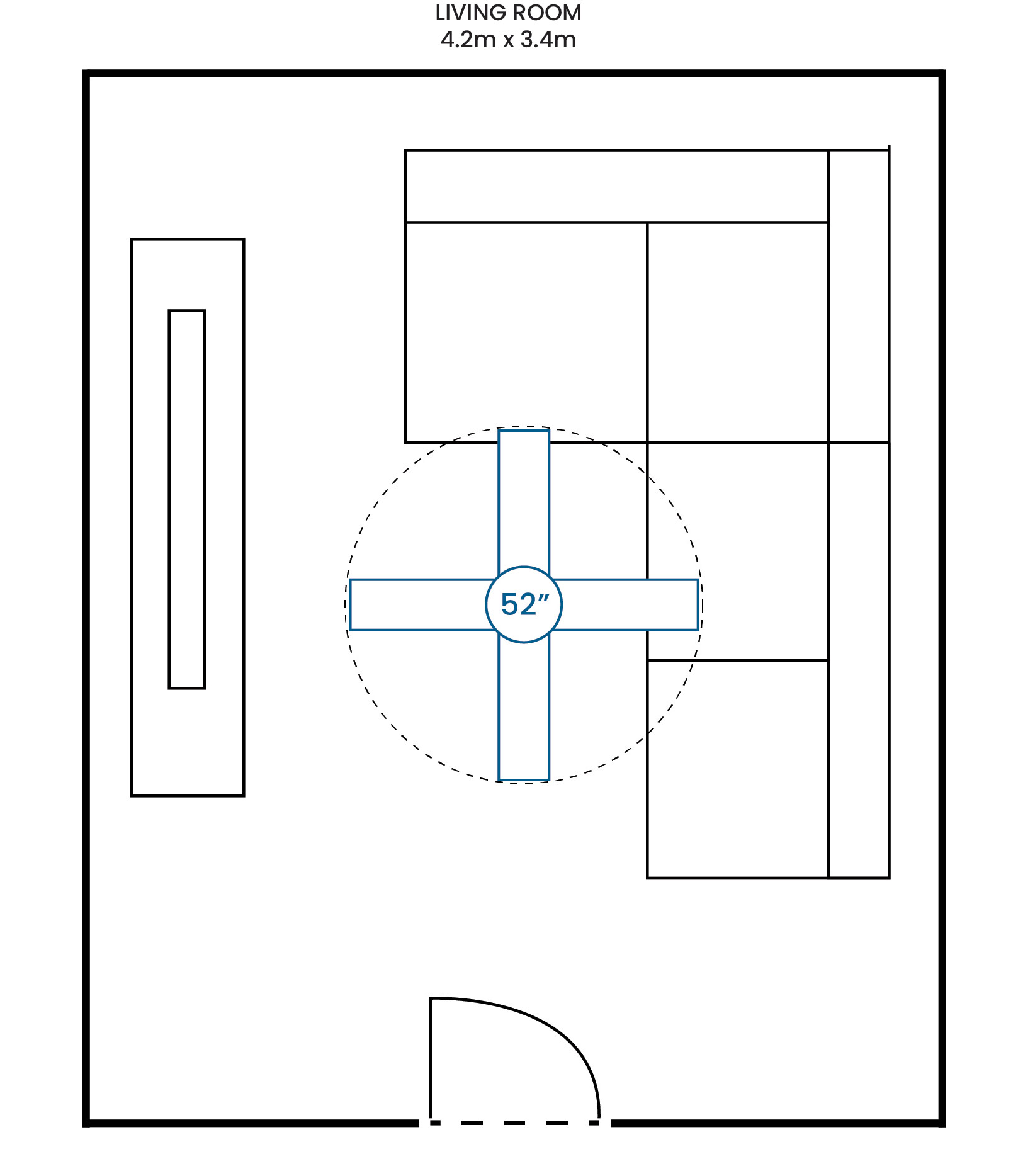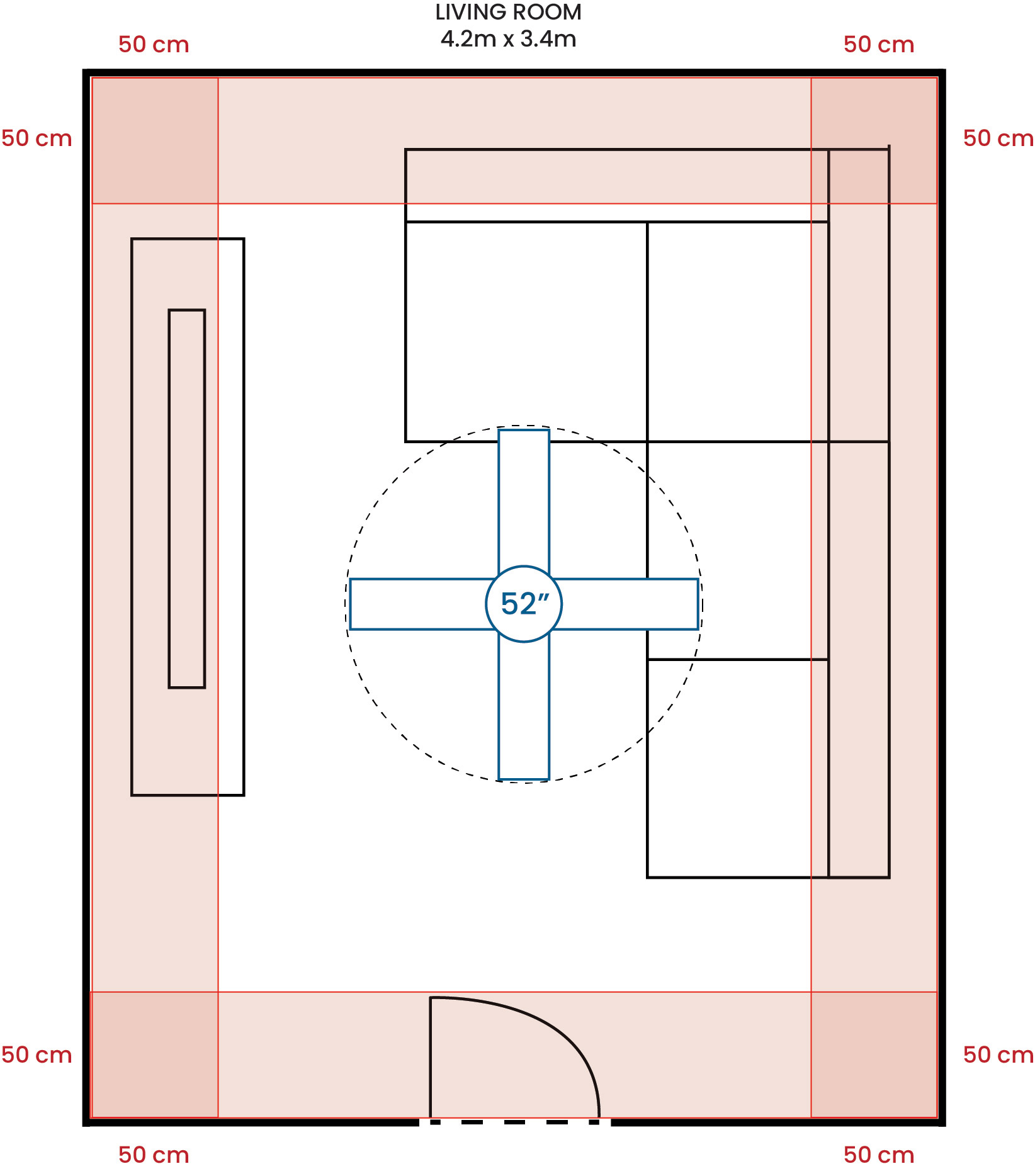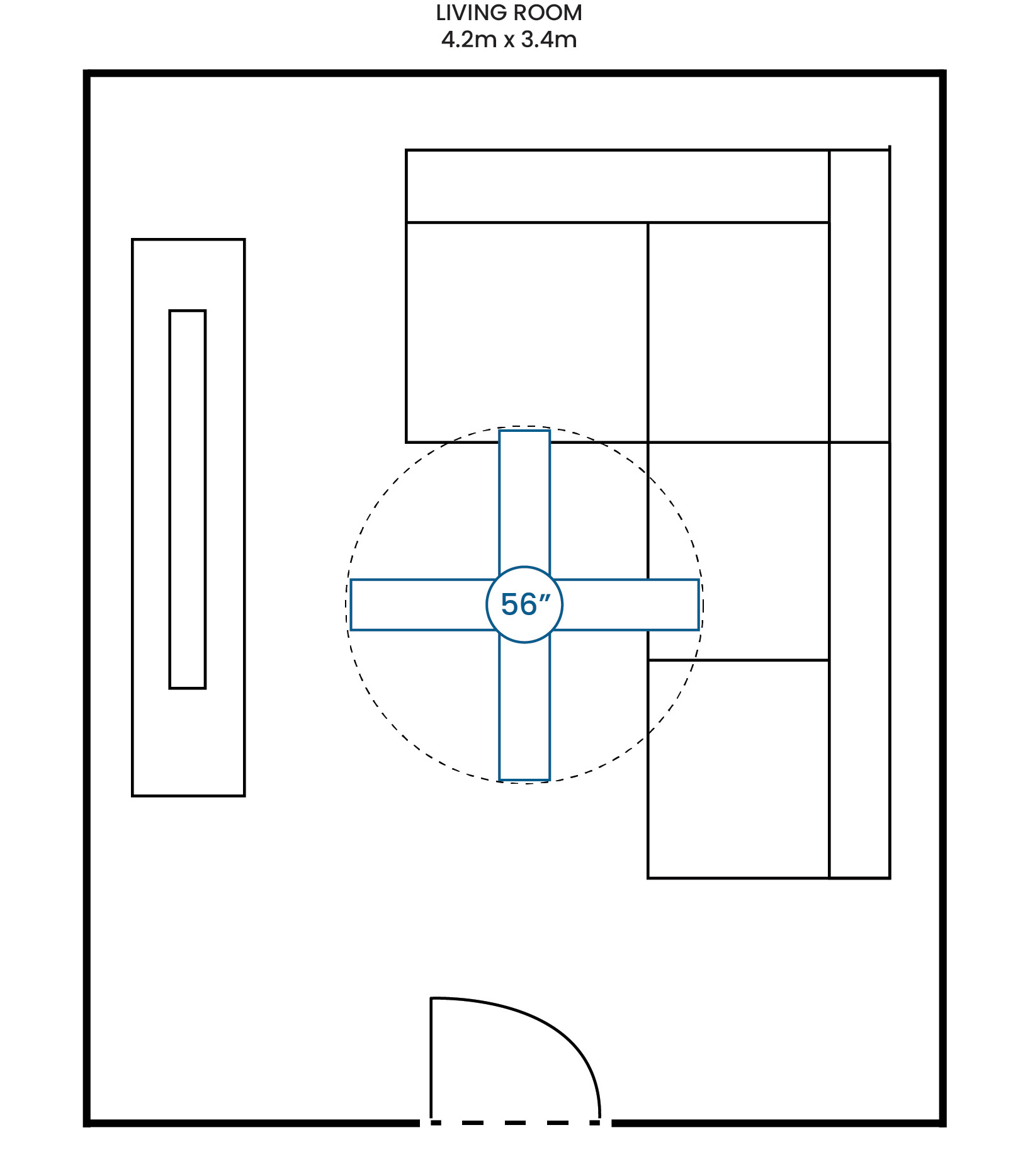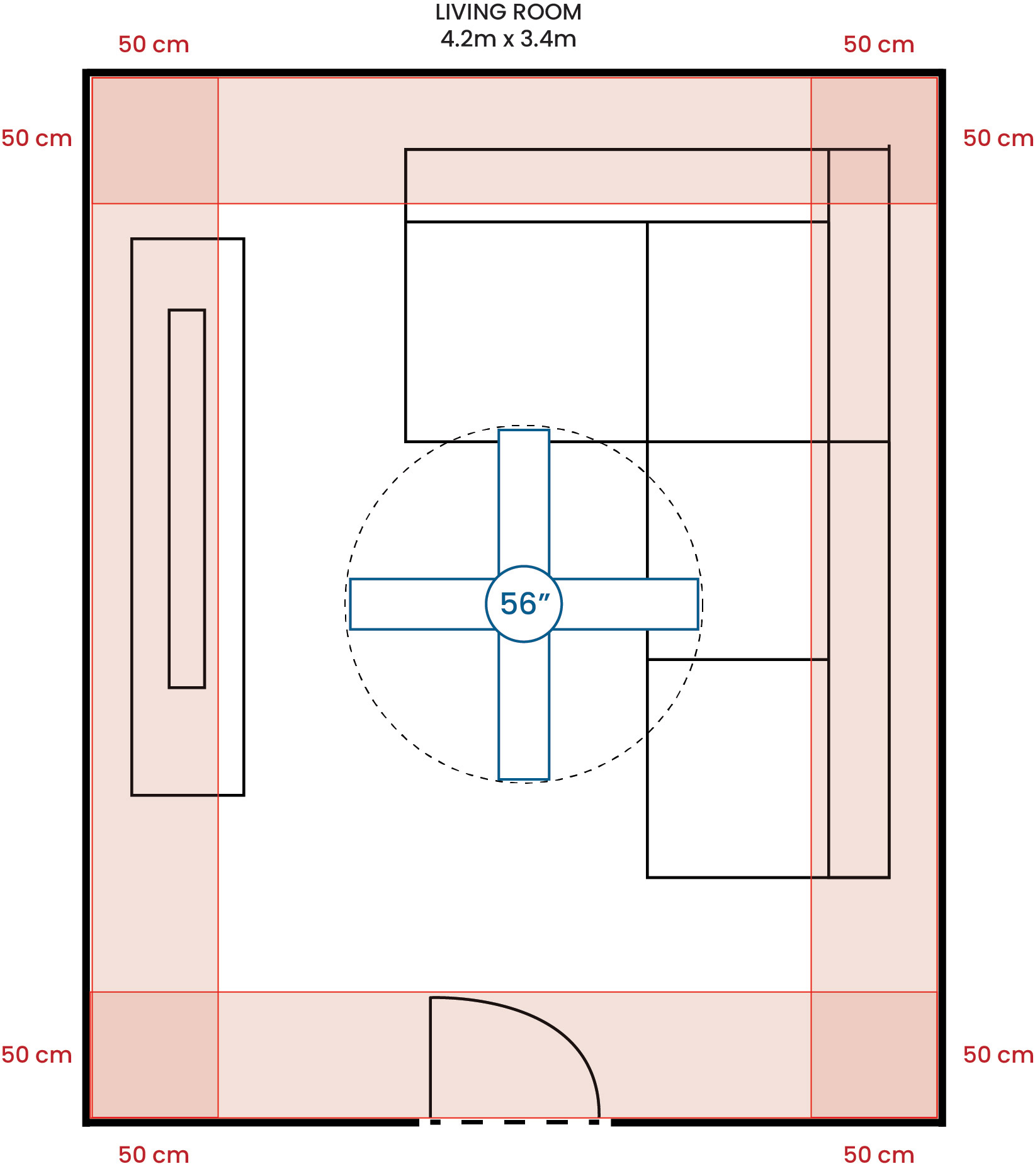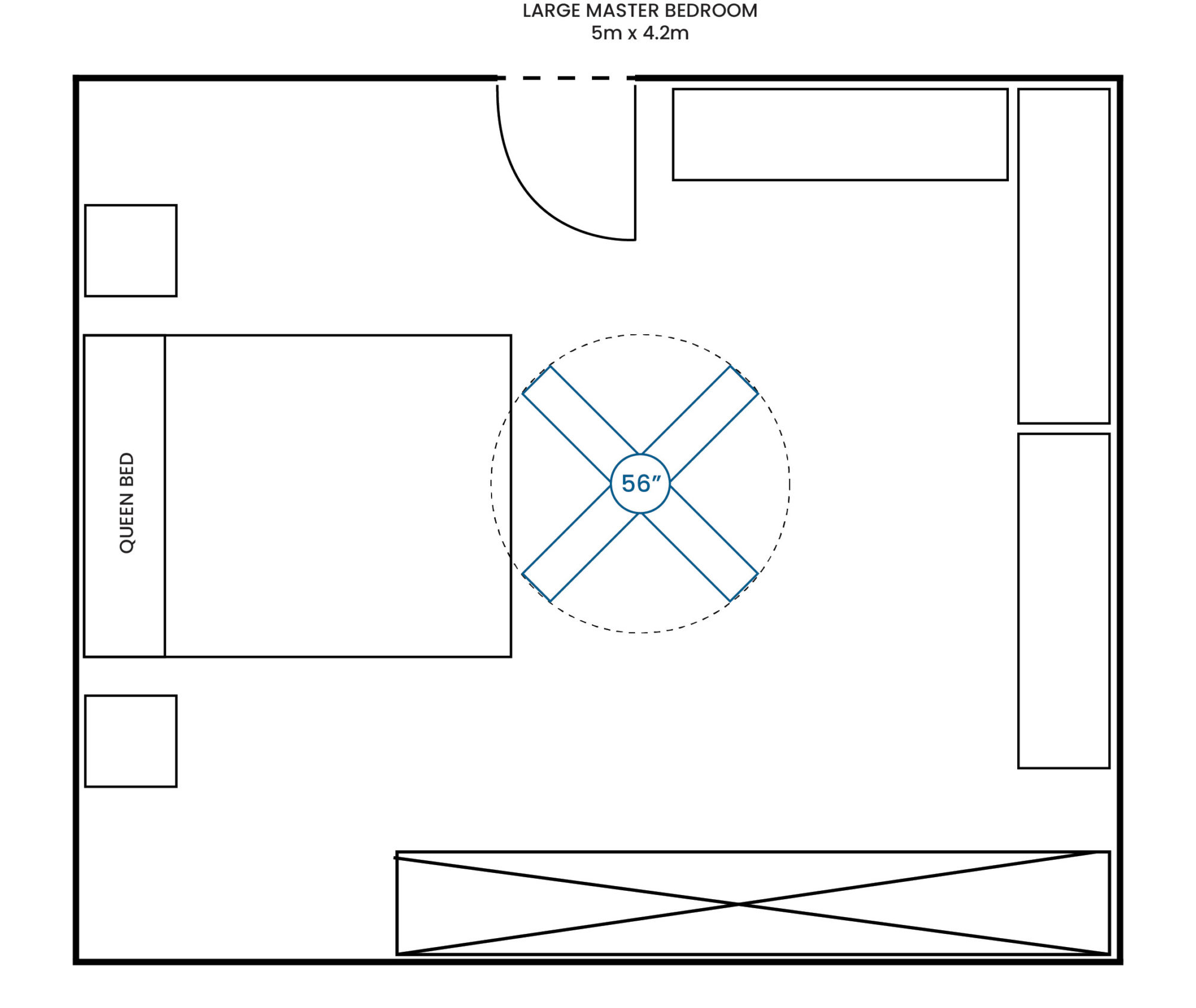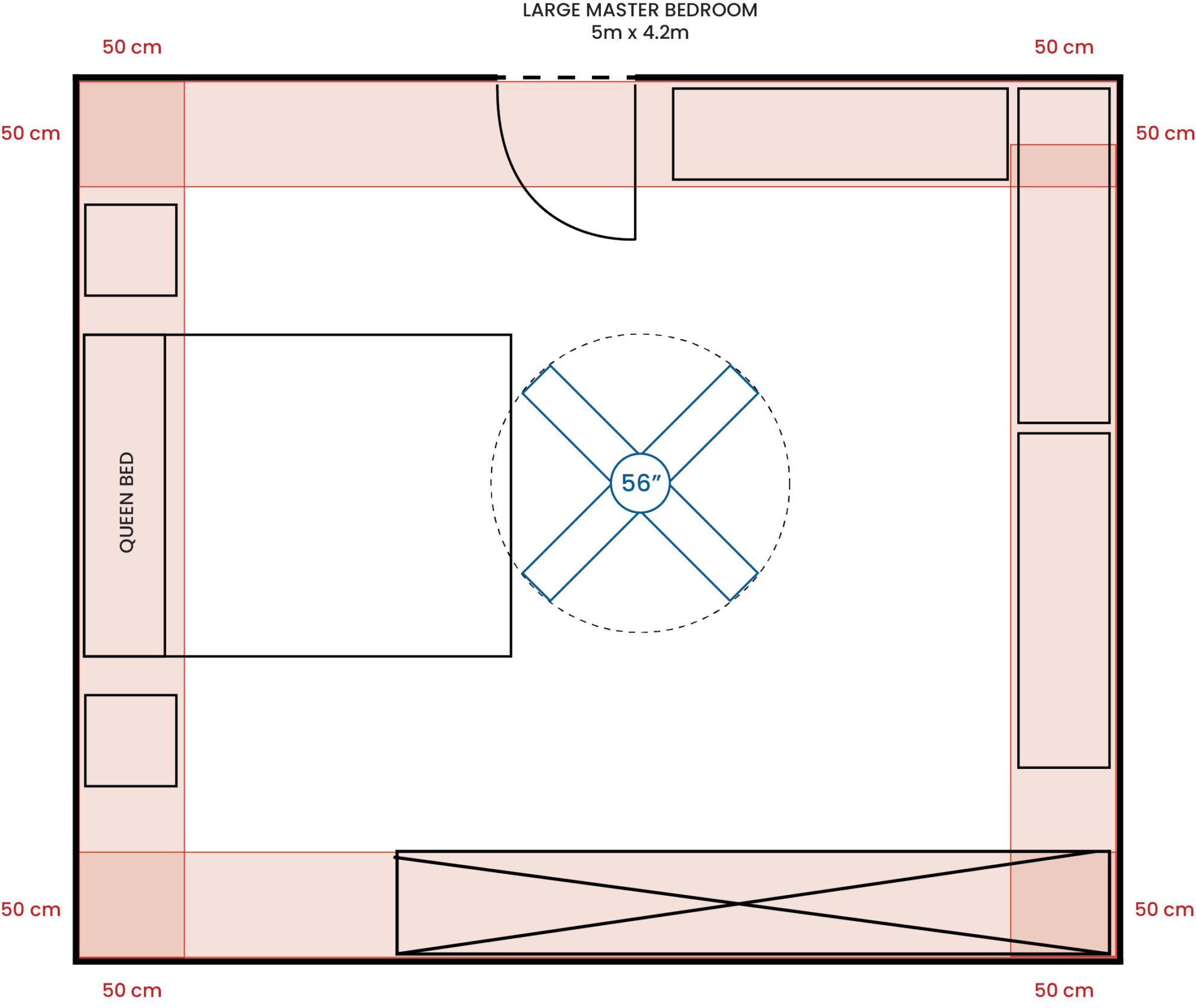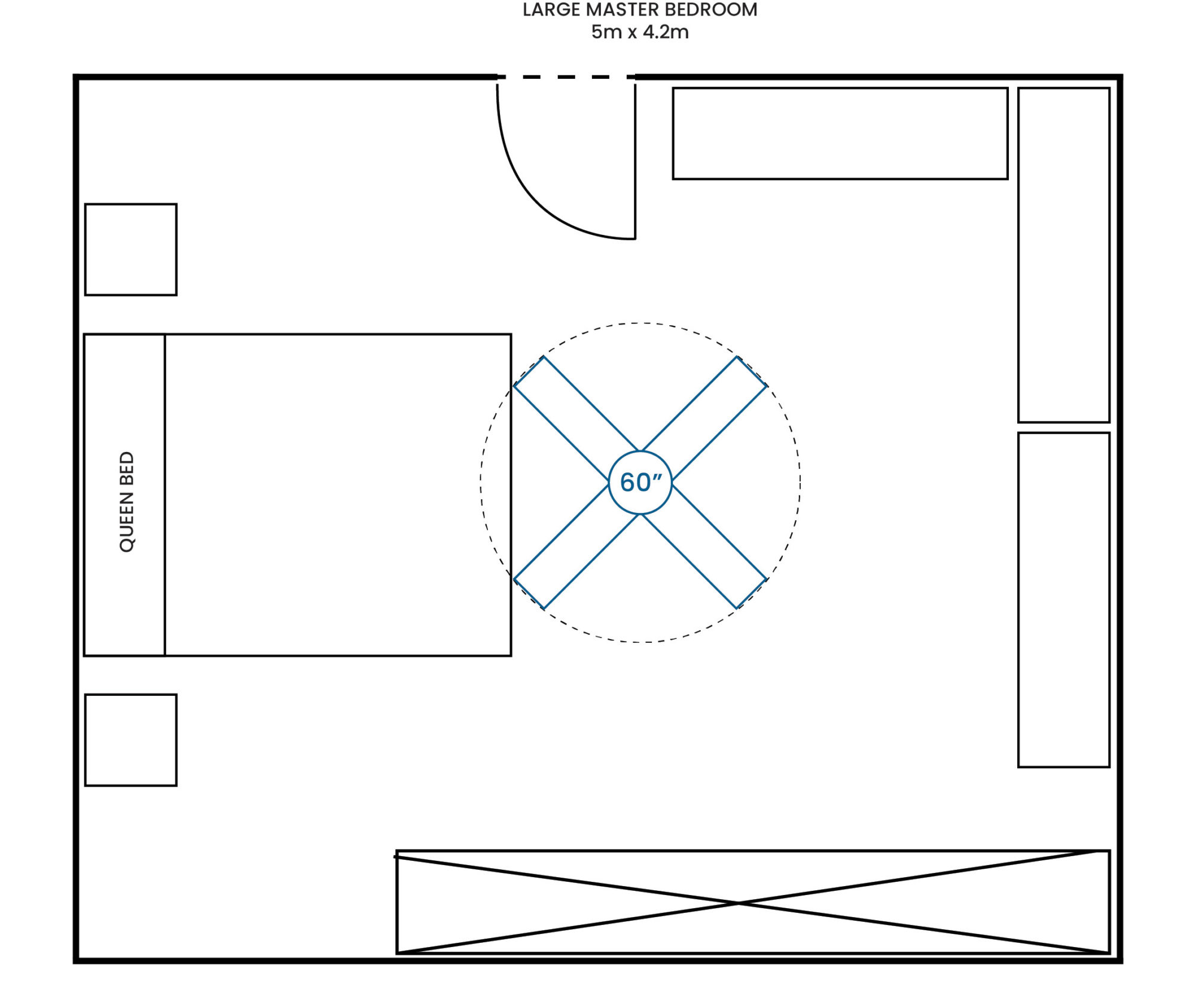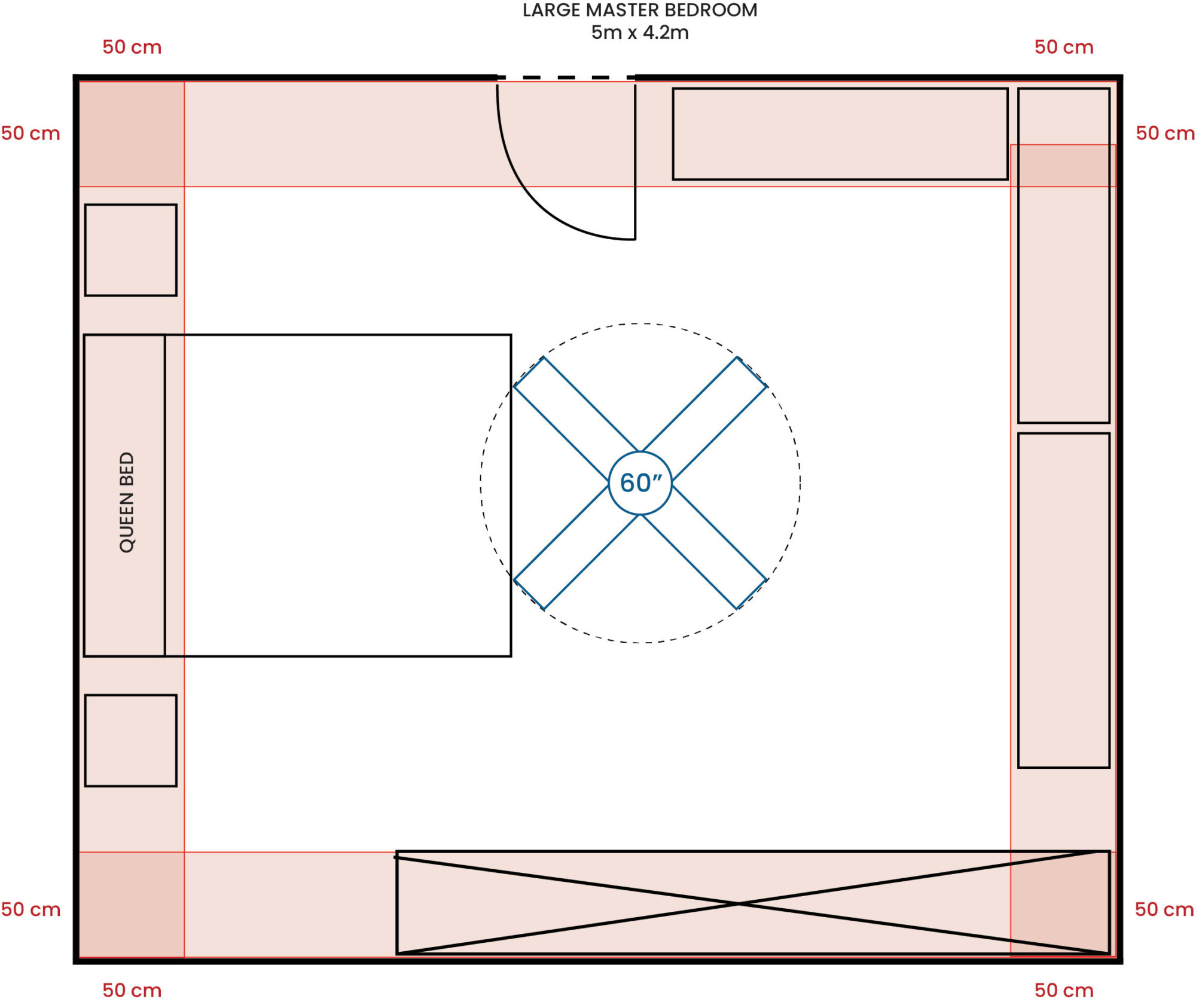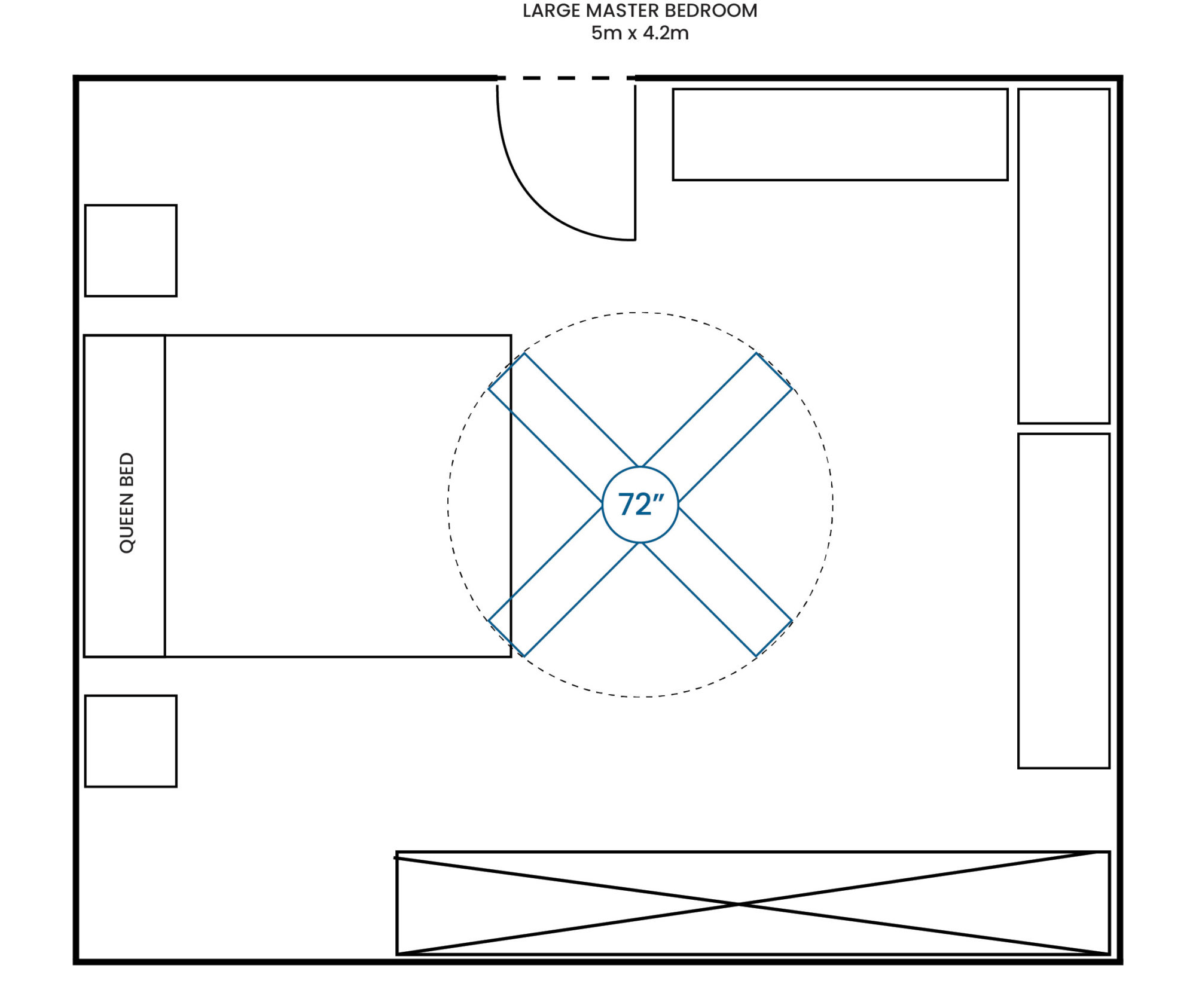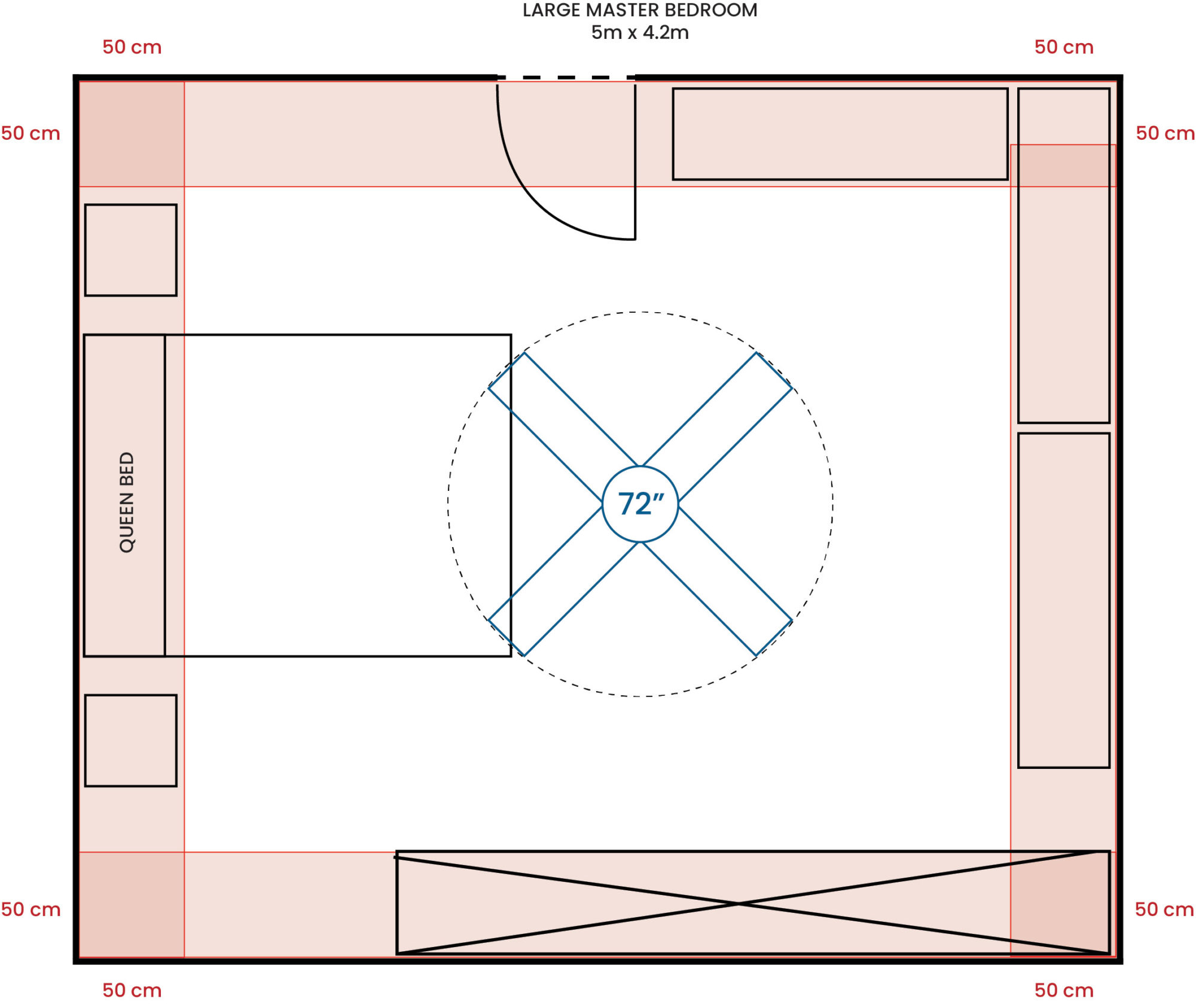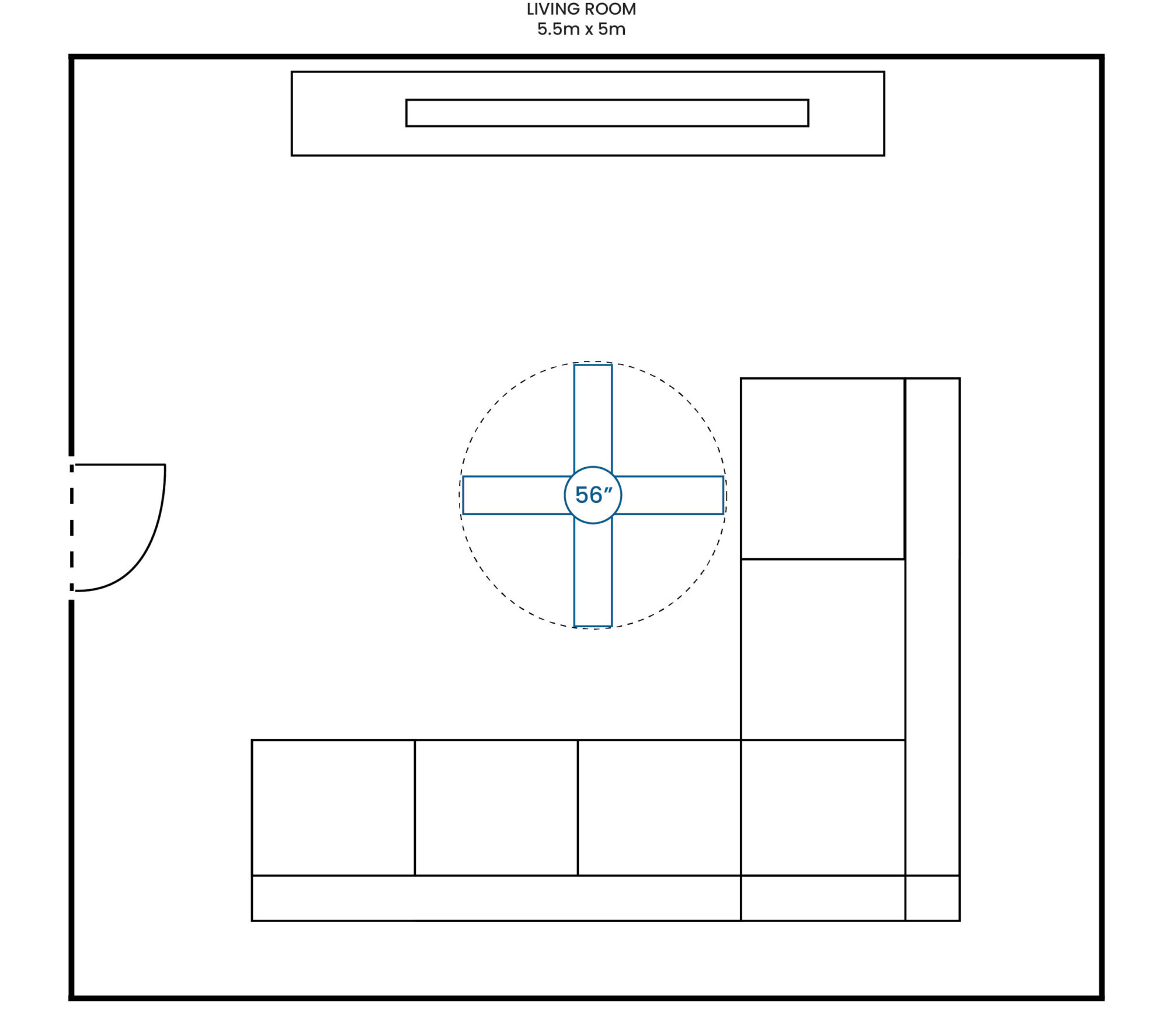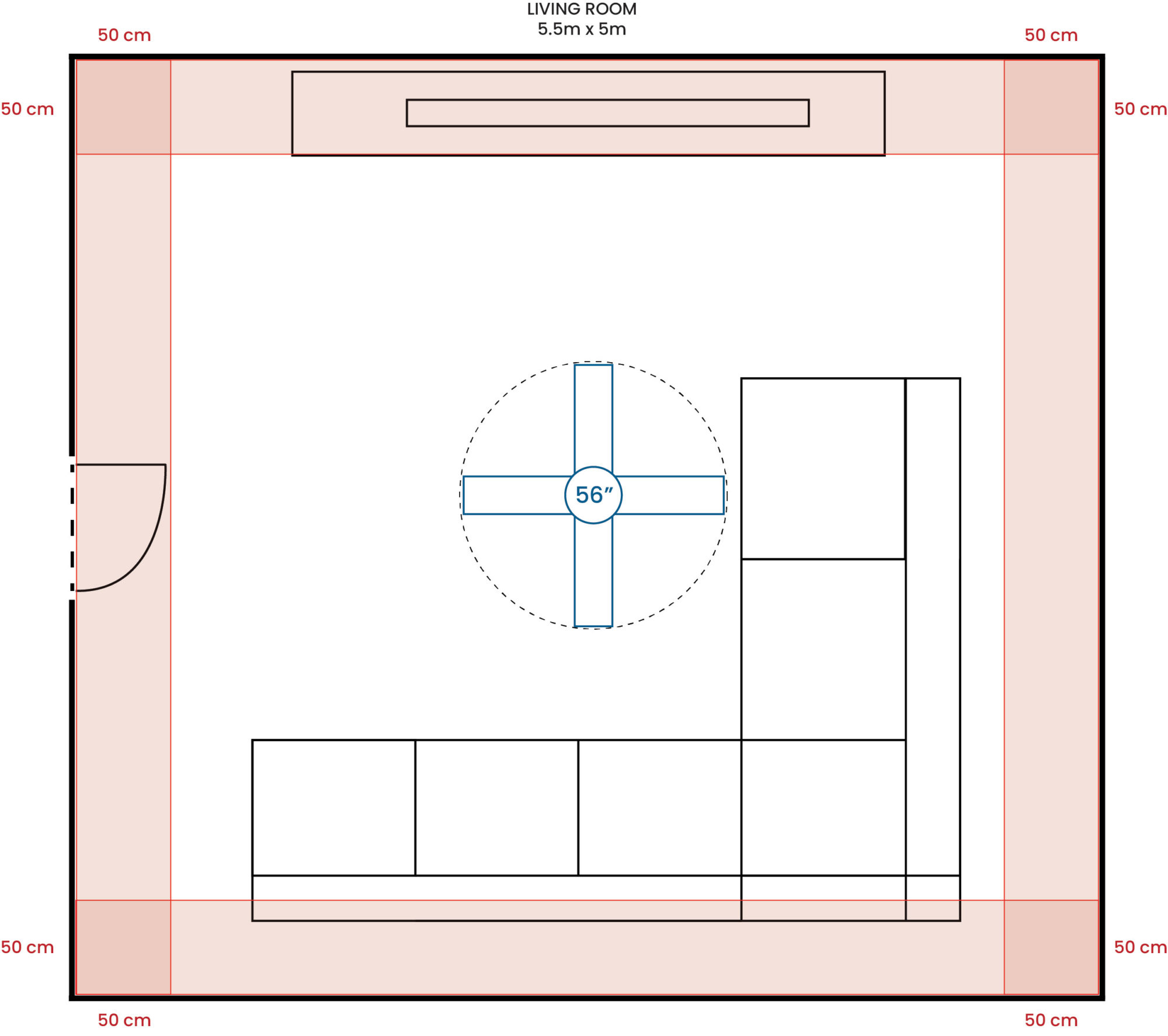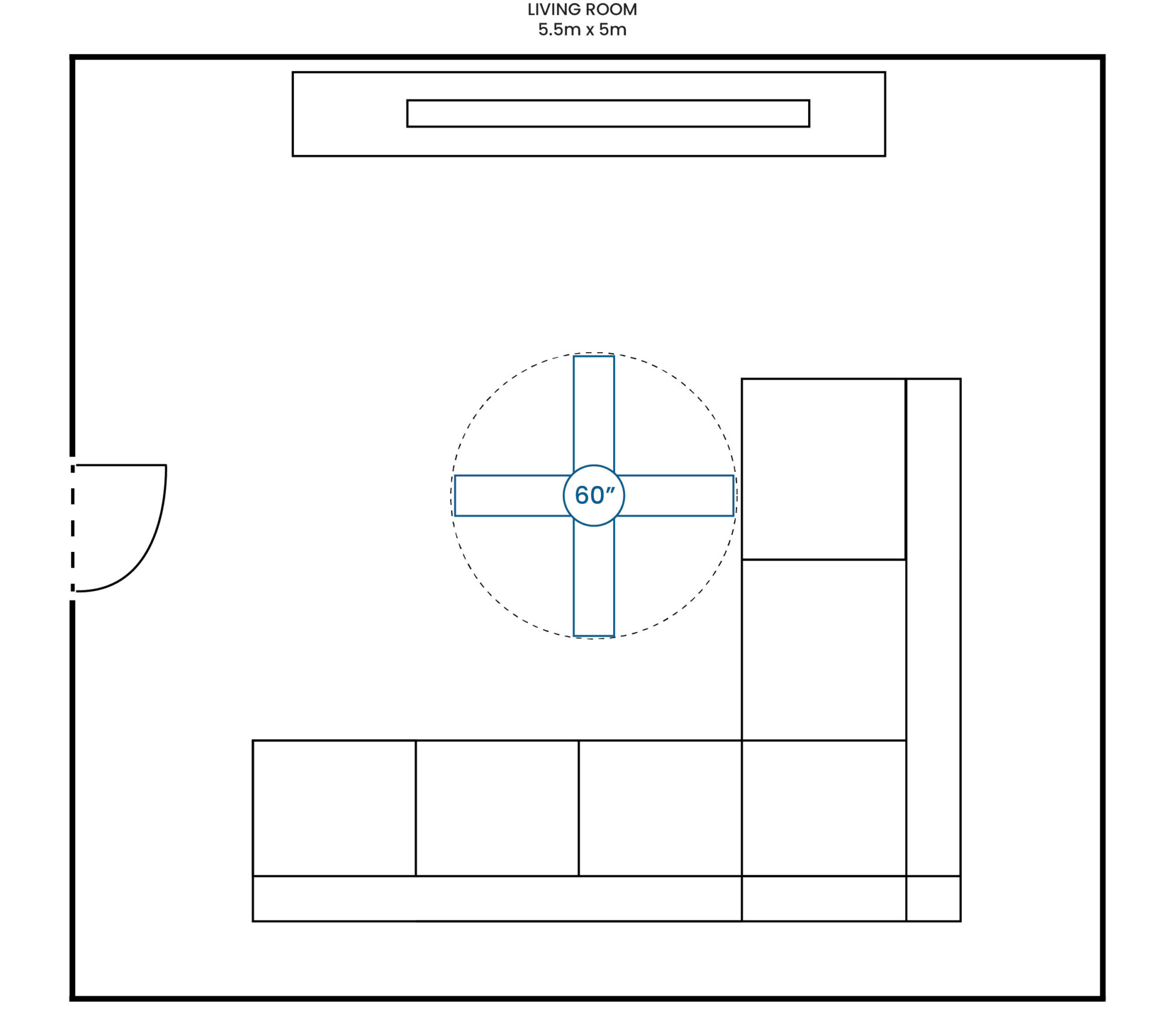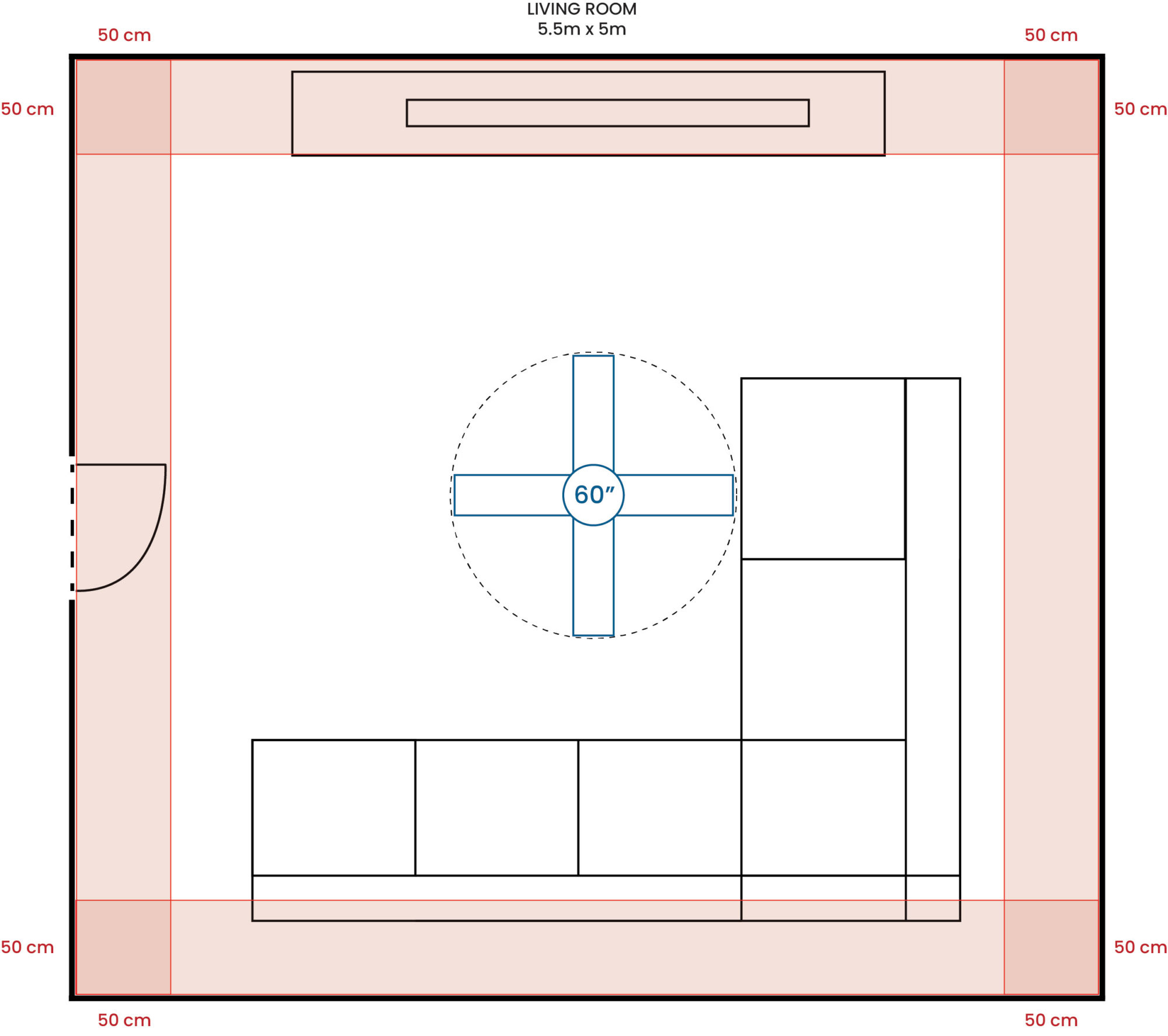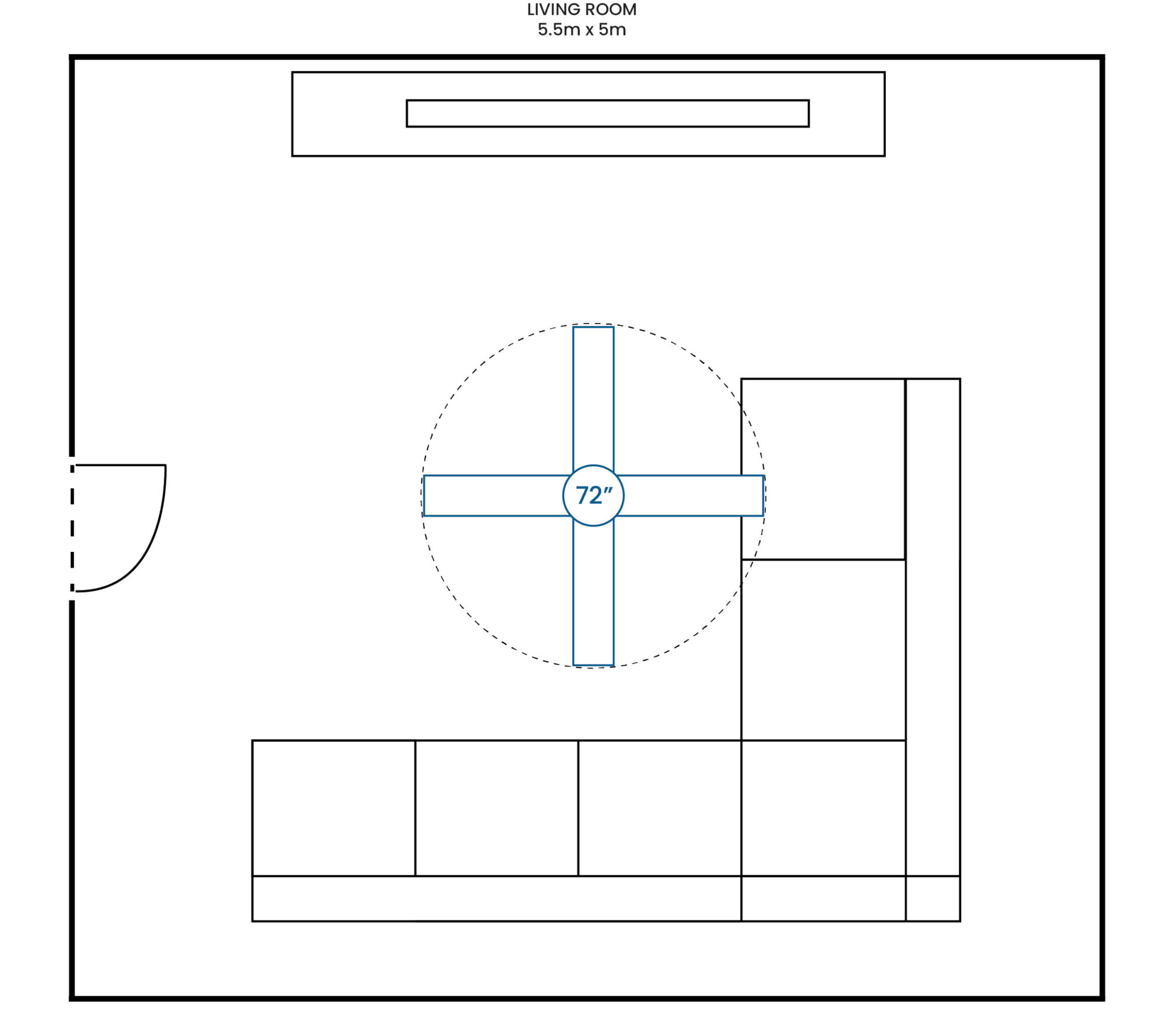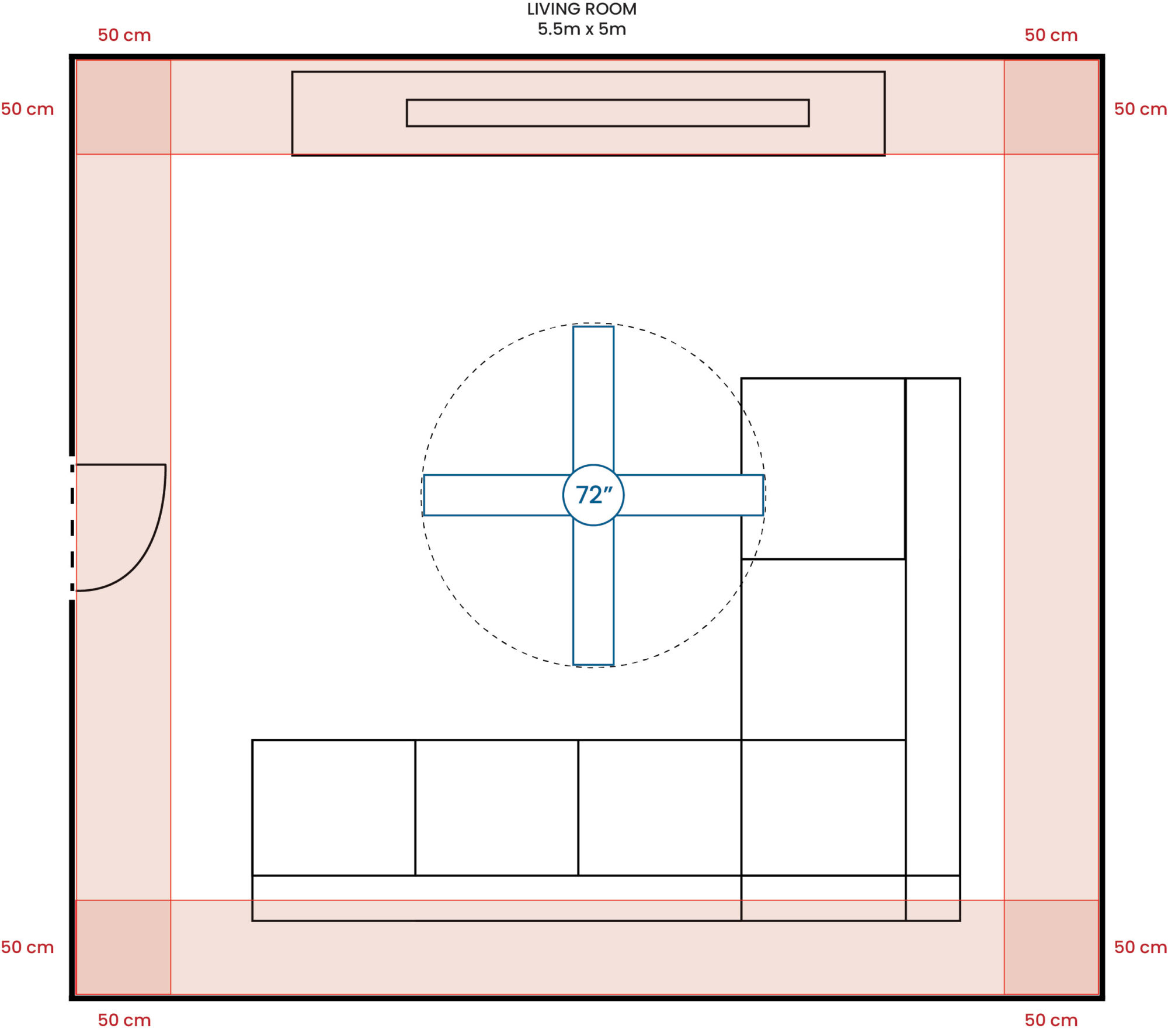Ultimate Guide to Buying a Ceiling Fan with ThreeSixty
Not sure where to start with your new ceiling fan purchase? The following is a guide to help you better understand what’s important in order to find the right ceiling fan for you.
Although to most people, a ceiling fan is a ceiling fan, when it comes time for you to make your choice the type and purpose of your ceiling fan can be worlds apart. A ceiling fan is not a one size fits all solution, certain ceiling fans can be a good or bad choice depending on their application. Some fans are designed to move huge amounts of air at a high RPM whereas others are designed to be quiet in operation to provide a breeze but not heard. Today, energy efficiency is a huge consideration to most household appliances, ceiling fans included.
In recent years, the humble ceiling fan has grown in its sophistication to become an integral part of the styling and comfort in our homes. Within each home comes different requirements for your ceiling fan – DC motor or AC motor? Diameter of the ceiling fan for the space? Do you need it to be a light source? Some of the key considerations for choosing your ceiling are:
- Where are you installing your fan? This will influence the recommended size of the fan, the types of performance to look for and the material the fan is made from.
- Should you choose an AC or DC ceiling fan? This will depend on things such as how you would prefer to control your ceiling fan, and functions you’d like included.
- Do you need your ceiling fan to include a light? We can help cover some of the common lighting terminology and options available.
Choosing your ceiling fan based on the location or space
Depending on where you plan to install your new ceiling fan, you will need to consider different things. Since most ceiling fans are installed indoors we will first cover common considerations for a few different room types and dimensions, then we will look at outdoor ceiling fans and finally cover some common considerations that apply to all ceiling fan installations.
Installing your ceiling fan indoors
Ceiling fans for indoors account for the vast majority of locations for the use of ceiling fans. Generally speaking, indoor ceiling fans are located in living areas and bedroom areas of the household to provide comfort while active (e.g. living areas), and comfort while resting (e.g. bedrooms). Each of these has its requirements.
Ceiling fans in your living area
Fans in living areas tend to be larger in their diameter to match the size of the space. More consideration is given to the aesthetic appeal of the fan to match your taste in décor, and a larger amount of airflow is required to circulate the air adequately in a larger area.
In most cases, the priority for a fan in a living space is performance and aesthetic appearance to suit your interior style. A fan’s noise is usually a lesser factor as typically you want greater airflow for a larger area that is not as sound-sensitive (as it competes with TV’s and kitchen noises). In these instances, a larger diameter fan 56″ or greater may be a great option to give sufficient airflow for your space. Lighting on the fan is not usually important as living areas require multiple light sources for full coverage.
Ceiling fans in your bedroom areas
Conversely, when considering what ceiling fan to use in a bedroom, quieter operation in lieu of large airflow is generally desired as a bedroom is a smaller space than living areas, a slower spinning quieter fan that still delivers the required airflow will give you better rest and comfort while you sleep. Think about the room you’re putting the fan in and what is important, greater airflow and size where noise is not really a factor? Or quiet, gentle airflow for a good night’s rest in comfort. Often this is the trade-off, and it is an extremely personal preference as to which option is more important.
For small bedrooms less than 3m x 3m, we would recommend 48″ or smaller ceiling fans. A small Australian bedroom is around 2.8m x 2.5m, in which space we would recommend a 44″ ceiling fan, although depending on the room layout a 48″ would still suit. For small bedrooms, consider your lighting requirements – you will most likely require a light kit on your ceiling fan.
For standard-sized bedrooms that are between 3m x 3m and 4m x 4m, consider ceiling fans between 48″ and 56″ in size, depending on the exact size of your room. The average bedroom size in an Australian home is around 3.2m by 3.0m, in which space we would recommend a 52″ ceiling fan. For larger than average bedrooms, up to 56″ model sizes may be suitable
For large master bedrooms that are over 4.0m x 4.0m, consider ceiling fans that are over 56″ in size. An average master bedroom in Australia is 4.2m x 3.9m, which would suit a 56″ blade span ceiling fan.
Since bedrooms are noise-sensitive areas, we recommend you consider ceiling fans with polymer blades as these fans will most often provide less wind noise. In terms of airflow and performance, this is subject to personal preference and the climate you live in. Most people prefer gentle and quiet airflow for their bedrooms, in which case most of our ceiling fans would suit. Refer to our Ceiling Fan Performance Guide to help identify which models would best suit your needs.
Installing your ceiling fan outdoors
An outdoor location for a ceiling fan can be loosely defined as an area external to the house but still with full coverage and not exposed directly to the elements (e.g. rain). A ceiling fan is considered to be suitable for outdoor use as it is capable of withstanding increased heat and humidity which can be detrimental to many types of materials used in fans. For example, cheaper types of fans can use MDF board for blades. If this is the case, when exposed to increased humidity conditions, the MDF material will most certainly absorb the moisture, swell up and break apart.
In years gone by, the traditional use for ceiling fans in outdoor locations was to ward off flies and mosquitoes from ruining your outdoor enjoyment. Nowadays with home design blurring the lines between indoor and outdoor living, it is important to provide comfort in an outdoor or patio area while maintaining the design aesthetic.
Outdoor (undercover) ceiling fans
Most of our ceiling fans can be installed in outdoor, undercover settings where they will not be exposed directly to rain. Look for ceiling fans that have powder-coated finishes and use polymer blades (high-grade ABS plastic) to make sure your fan can resist the elements. Avoid plated finishes (such as Brushed Nickel) and normal steel fans.
Coastal ceiling fans
The next extreme for ceiling fan installation locations is a coastal location. This would need a ceiling fan to be suitable for use in an environment close to a coastline and/or exposed to corrosive elements. Today there are many fans available to choose from that cater for this kind of location. Materials like aluminium, high-grade plastic (polymer), and 316 marine grade stainless steel are good choices to make when considering installing a fan in a coastal location. This by no means is an excuse not to clean your fan regularly as coastal outdoor locations can degrade most materials if left unchecked.
Performance recommendations for outdoor ceiling fans
Consider ceiling fans with higher Breeze ratings for your outdoor area. Since outdoor spaces typically aren’t fully enclosed, your ceiling fan won’t benefit as much from convection airflow – therefore you will want a ceiling fan that is able to push airflow faster directly below it so you stay cool and help keep the bugs away. Read our Ceiling Fan Performance Guide for more information.
Choosing a ceiling fan that will provide the right airflow for you and your space
The major influencers on the performance of a ceiling fan are the size of the motor, the size and shape of the blades, the material the blades are made of, the RPM of the fan, and the pitch of the fan blades. It is the combination of all of these factors working together that will give your fan the best performance results. However, what works the best functionally may not work the best in terms of style, application for your space, your climate, and most importantly your personal preference.
Ceiling fans are an excellent low-energy appliance to help keep you cool and comfortable on hot and humid days. Ceiling fans cool you down by generating a breeze which creates a wind chill effect. This wind chill effect is increased with the increase in wind speed created from the fan, or its “velocity”. The velocity of wind the fan creates is not the same as the amount or volume of air moved.
“Ceiling fans cool you down by generating a breeze which creates a wind chill effect.”
Manufacturers of ceiling fans often quote the volume of air a fan produces as a metric, Cubic meters per hour or CM/H. While the CM/H metric does give you an idea of the performance of the fan, it does not tell you the full story. For instance, if you are unsure whether you need a 132cm diameter fan or a 152cm diameter fan and you looked to the CM/H of each fan to determine which one would offer the best for cooling you, you would not be evaluating them correctly. If you make this direct comparison, then it is likely that the 152cm diameter fan will have a higher CM/H number as it displaces more air over a larger area but may not create as much wind speed or airflow velocity directly below the fan.
So what should you be looking at to find the right airflow for your space?
The “right” type of airflow depends on a number of factors (where the fan is being installed, the climate you live in, etc.), but the most important is your personal preference. Some people like gentle and quiet airflow, while others prefer powerful airflow. The following sections will help you understand how we’ve graded our fans, how big your fan should be, and how high you should hang it.
- Understand the type of airflow each fan can provide
- Choose the right size fan for your space
- Hang your ceiling fan at an optimal height
Once you know these things, you should be in a solid position to choose the right ceiling fan for your space and to match your personal preference.
Understand the type of airflow each fan provides.
The best way to know what type of airflow a ceiling fan will provide is to stand under it, of course. However, this is not always possible so we have created our Fan Performance Indicator (FPI) rating system to help understand the type of Breeze you can expect under the fan, along with the total volume of air the fan will move at high speed.
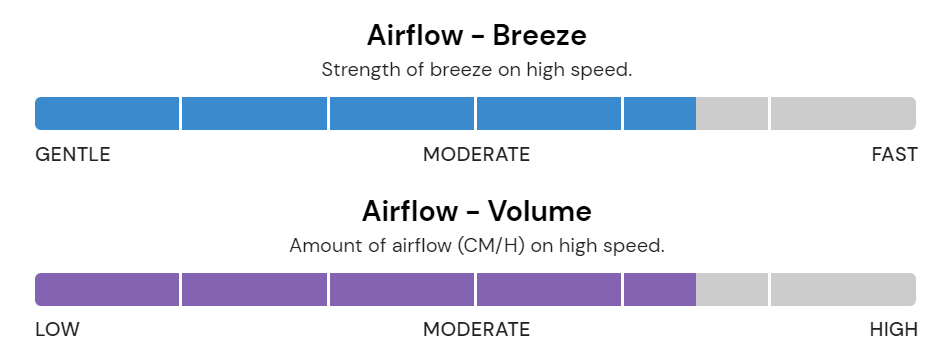
The Fan Performance Indicator (FPI) is split into two bars – the blue bar indicates the ceiling fan’s airflow breeze (wind chill) performance on high speed, while the purple bar indicates the ceiling fan’s airflow volume (CM/H) on high speed.
Airflow – Breeze (wind chill)
The Airflow Breeze rating goes from Gentle to Fast. A ceiling fan that is more towards the Gentle end will provide gentle, relaxing, and extremely quiet airflow directly below the fan. Conversely, a ceiling fan that is towards the Fast end will provide high-velocity airflow directly below the fan, ideal for very hot and humid climates or if you prefer strong airflow.
Airflow – Volume (CM/H)
The Airflow Volume rating takes the ceiling fan’s Cubic Metre per Hour (CM/H) measurement and normalises the results across our entire range of ceiling fans and based on our industry experience on how much air ceiling fans typically move. A ceiling fan towards the Low end will move less air overall, and would therefore not be recommended for larger spaces but may be perfectly suitable for smaller areas. Conversely, a ceiling fan towards the High end moves a lot of air and will disperse the air over a larger area.
Using Breeze and Volume together to make an informed decision
Separately, neither indicator paints the whole picture of your ceiling fan’s performance. Together, though, they can be used to make a much more informed decision without being able to see the fan in operation. Below, we have covered a few different examples to help show different cooling solutions and when they might be recommended.
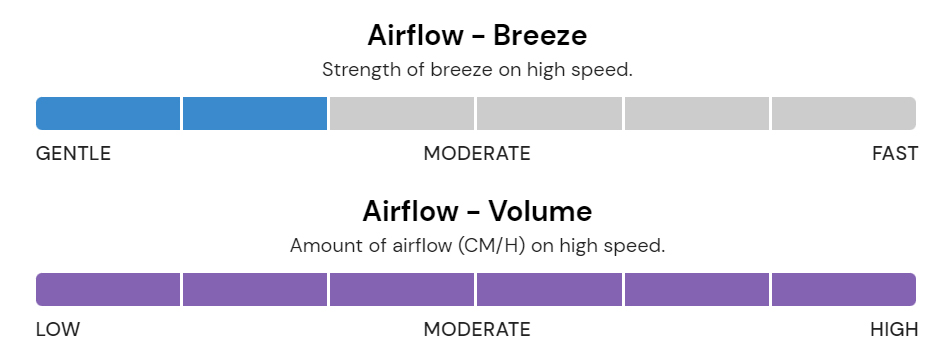
The above FPI results from our massive 100″ Kirra ceiling fan show a more gentle airflow breeze solution with very high airflow volume. This particular model falls into the High Volume Low Speed (HVLS) genre of ceiling fans. It is designed to move huge volumes of air but at a low velocity. The breeze you would experience directly under the fan would be gentle, however, due to the size of the fan (100 inches), you would enjoy a breeze in a much larger area. This fan would be ideal for very large spaces that could benefit from air circulation – e.g. moving warm air around a space in winter to improve heating, moving air-conditioned air around a large space to improve cooling performance, or keeping the air in a large space fresh. Some applications might be large foyers, restaurants, large high-ceilinged dining areas, large living areas, and so forth.
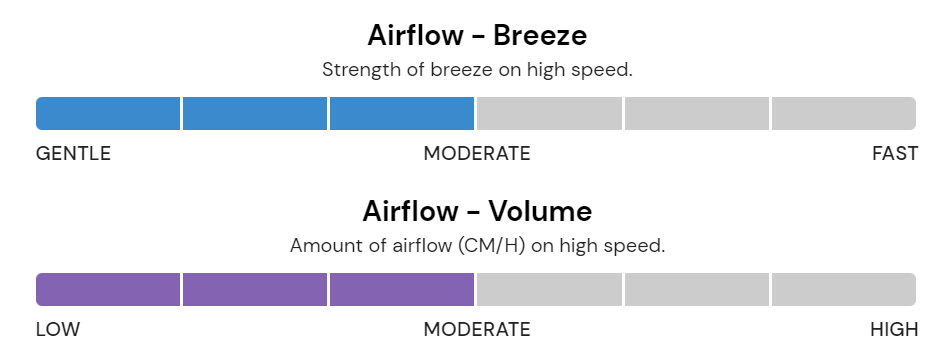
The above FPI results from our 52″ Modn-3 ceiling fan show a midrange model in terms of breeze and airflow volume. This type of model would suit smaller enclosed spaces (e.g. bedrooms) if you like a gentle breeze while you sleep, or any space where you want a breeze but don’t enjoy extremely strong airflow. It may suit dining areas and lounge areas where a gentle breeze is desired, without disturbing the conversation or table settings.
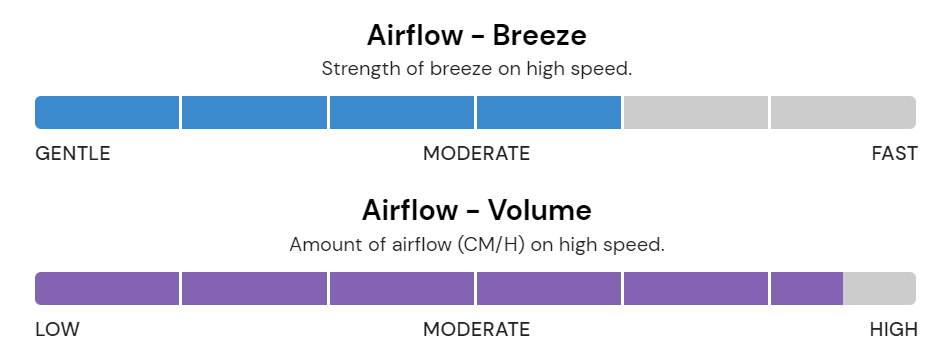
The above FPI results from our 60″ Spitfire ceiling fan show a ceiling fan that will provide moderate airflow directly below and spreading out from the fan. This is because at 60 inches it is an above-average size ceiling fan that will therefore disperse air over a larger area. Great for master bedrooms, larger living and dining areas where solid airflow is desired while being whisper-quiet.
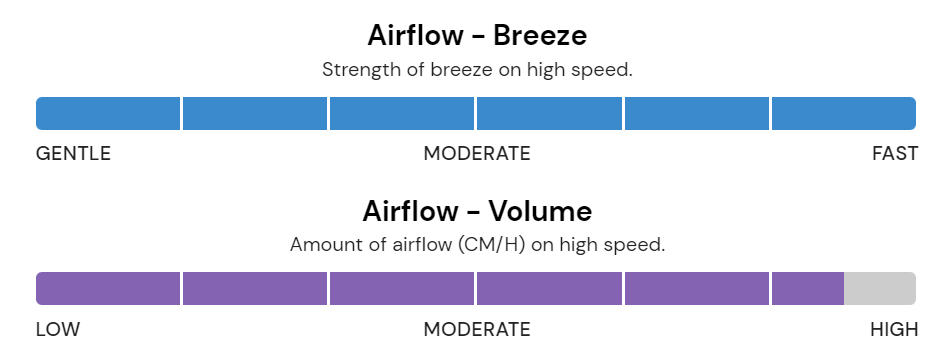
Finally, the above FPI results for the 56″ Delta DC ceiling fan show a high-performance solution that will provide a strong breeze directly below the fan while also providing good overall airflow volume for your space.
Understand how the number of blades affects your ceiling fan’s performance
Don’t focus too much on the number of blades on your ceiling fan. Yes, blades are an important part of your ceiling fan and the number of blades does impact ceiling fan performance. However, there are many factors that influence ceiling fan performance – blade pitch, blade aerodynamics, motor performance – which all need to be considered in order to determine overall performance.
So the number of blades, on its own, is not a reliable indicator of performance. A three blade ceiling fan may be better or worse than a four-blade fan, a four-blade fan may be better or worse than a five-blade fan, and so on. We have published our Fan Performance Indicator (FPI) on all our Data Sheets and also on every product page. The FPI should be used to help identify models that will offer you the right type of cooling based on your personal preference and requirements.
Understand how ceiling fan air circulation helps keep you cool
A factor to consider with your ceiling fan’s performance is its ability to circulate the air. A fan’s effectiveness is not only its ability to cool whatever is beneath it, but you will also get benefits from the fan circulating air throughout the room.
In an average-sized room with an average size fan, the continued forcing of the air down towards the floor will see the air dissipate outwards to the room walls and up until the air has circulated back to the fan, creating a circular flow within the room. This circular flow provides you with the best application of your ceiling fan for full effect. Factors that may limit your ceiling fan’s performance are if the fan cannot draw enough air from above, if the fan is too close to a wall and the flow is interrupted, or if the fan is obstructed by an air conditioning duct and provides uneven amounts of air.
When using fans in a patio or an outdoor situation the circulation of air is affected by the fact that there are no walls present to feed the air back to the fan. So for outdoor applications of ceiling fans, the velocity and the CM/H of the fan is most important as the air provided will be forced down and simply be lost in the outdoor environment. Fortunately, when fans are used outdoors it is generally not in a sound-sensitive environment so a high velocity, high RPM fan will provide adequate cooling and breeze in these situations.
To ensure your ceiling fan provides optimal performance, you need to ensure you choose the right size ceiling fan and hang the fan at the right height.
Choose the right size ceiling fan for your space
There’s no exact science to selecting the right size ceiling fan for a space (as every room layout is different), but the following sections will help guide you in the right direction. Always ensure at least 50cm of space from the tip of any blade to any wall. Pay attention to high furniture or floor-to-ceiling wardrobes to make sure they won’t reduce your fan’s performance.
“Always ensure at least 50cm of space from the tip of any blade to any wall.”
Small spaces (small bedrooms, offices, media rooms, etc.)
For small spaces less than 3m x 3m, we would recommend 48″ or smaller ceiling fans. A small Australian bedroom is around 2.8m x 2.5m, in which space we would recommend a 44″ ceiling fan, although depending on the room layout a 48″ would still suit. For small spaces, consider your lighting requirements – you will most likely require a light kit on your ceiling fan. Having a 48″ ceiling fan in a small space may dominate the decor in the room – so consider the style of the ceiling fan to be installed.
Medium spaces (standard bedrooms, living areas, dining area, etc.)
For medium spaces that are between 3m x 3m and 4m x 4m, consider ceiling fans between 48″ and 56″ in size, depending on the exact size of your room. The average bedroom size in an Australian home is around 3.2m by 3.0m, in which space we would recommend a 52″ ceiling fan. For larger than average bedrooms, up to 56″ model sizes may be suitable. A 56″ model in the standard bedroom would fit (depending on layout), however may dominate the space and provide too much airflow volume.
The average standard Master Bedroom in an Australian home is 4m x 3.8m and blurs the line between medium and large spaces. This would allow for ceiling fans up to 60″ in diameter, although a 52″ ceiling fan positioned directly over the bed would still provide the necessary cooling while you sleep. A small Master Bedroom that is 3.5m x 3.5m would suit either a 52″ or 56″ ceiling fan.
The average Living Room in an Australian home is 4.2m x 3.4m and suits models between 52″ and 56″ in diameter. Try to position your ceiling fan over key gathering points – e.g. the couch in a living room – to provide the most cooling.
Large spaces (large master bedroom, large living areas, dining area, etc.)
For large spaces that are over 4.0m x 4.0m, consider ceiling fans that are over 56″ in size. An average master bedroom in Australia is 4.2m x 3.9m, which would suit a 56″ blade span ceiling fan. For very large spaces, it is often more effective to install multiple smaller ceiling fans located over specific gathering points (couch, dining table, etc.) as opposed to one large ceiling fan.
A very large master bedroom (e.g. 5m x 4.2m) may suit a ceiling fan up to 70″ in diameter for people that enjoy a gentle, quiet ceiling fan while they sleep.
A Large Living Room that is 5.5m x 5m would suit models larger than 56″ in size, although the 56″ model would need to be well-positioned and would only provide localised cooling (e.g. over a couch). Depending on the type of cooling you are looking for, a larger ceiling fan may suit the space better but factor in the type of airflow and cooling you would prefer.
Hang your ceiling fan at an optimal height
One often overlooked variable in the performance of a ceiling fan is its distance both from where the air needs to be delivered but also the distance of the fan from the ceiling. While it makes sense that you want the breeze velocity from the fan close to where it is needed to create optimal wind chill and breeze, this air needs to come from somewhere.
Ceiling fans draw in air from above and force it down to create the breeze we feel. If there is a restriction of the available air above the blades for the fan to draw upon, this can create a vacuum effect and begin to draw the same air that is being displaced down, back up to the top of the fan. This results in a “cavitation” effect and impedes the performance of the fan. In most cases the ceiling fan provided to you in a box is not set to its optimum drop away from the ceiling, it is generally provided to you to be 30cm from the ceiling as this is the minimum height requirement on a standard 2.4m ceiling in Australia.
“Your ceiling fan blades must always be at least 2.1m from the floor to meet safety regulations.”
If you have the luxury in your space to be able to drop the fan down from the ceiling via a downrod it is advisable to do so to get the most out of your fan’s performance. For starters this gets the maximum velocity of the air forced closer to where it is needed, however, it is equally important for the fan to have as much unobstructed access to air from above to force it down efficiently.
“For high ceilings, try to position your ceiling fan between 2.4m and 2.7m from the floor.”
In terms of buying a downrod accessory for your ceiling fan, all our downrods are available in either 90cm or 180cm lengths and these can be cut to custom lengths by your installing electrician. The exact recommended downrod length for each ceiling height will vary slightly between models, as it depends on how deep the fan itself is. Refer to the ceiling fan’s Data Sheet as this will outline the distance from the ceiling to the bottom of the motor and blades for each model. This figure will be helpful in determining whether you will need a longer downrod, along with how long that downrod should be.
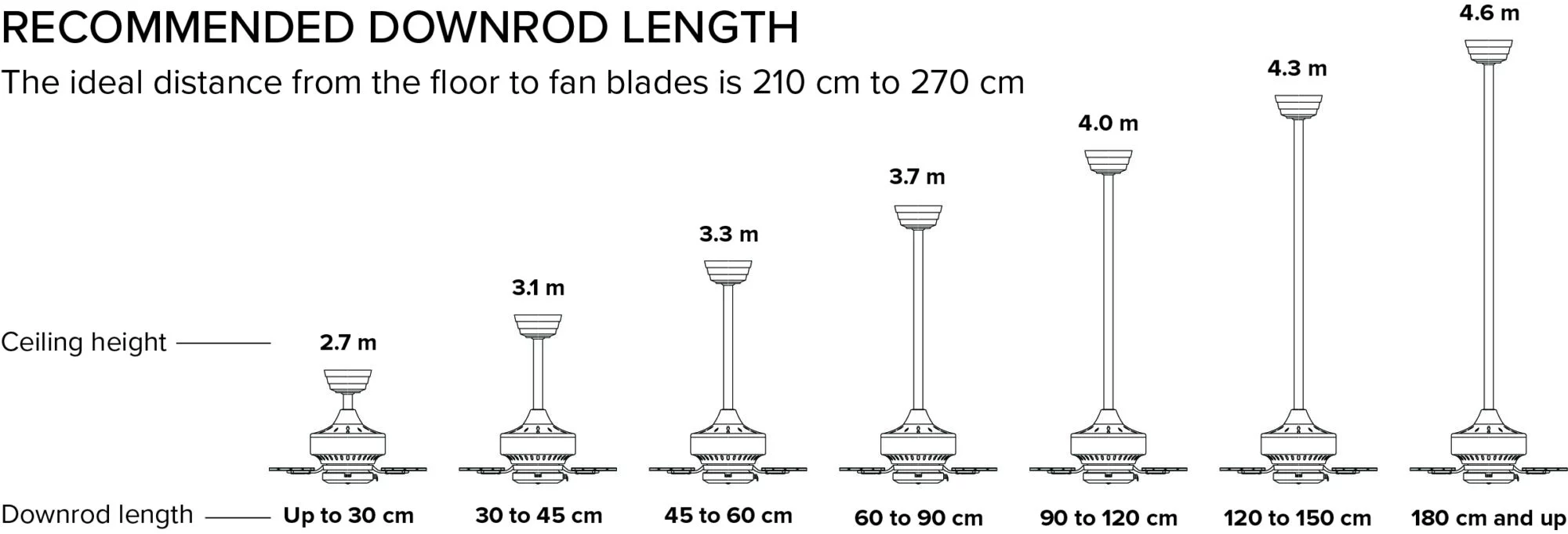
You can always get in touch with our friendly team should you have any questions or concerns about your specific installation requirements.
Consider your ceiling slope or angle
The recommended downrod lengths may change based on the slope or angle of your ceiling as high raked ceilings may require your fan to be dropped further to avoid the blades coming into contact with the ceiling.
Refer to our Sloped Ceiling Kits Guide for advice on whether you need an additional accessory.
Choosing between AC and DC ceiling fans
Emerging as another major consideration when selecting the right ceiling fan for you is the choice of motor to run the ceiling fan. Obviously, the motor in the ceiling fan is the most important component to the ceiling fan’s working. Until recently, there has only been 1 major type of motor to operate your fan, this is the Brushless AC motor. AC meaning Alternating Current. This type of motor has been around since basically the beginning of ceiling fans.
Over the past few years, a new motor technology has emerged and has been implemented by ceiling fan manufacturers, this is Direct Current motor technology or DC motors. With the global trend towards energy efficiency and power prices rising, DC motors are more energy-efficient in terms of running costs. Both types of motors have their pros and cons, which we will explain. Keep in mind though that ceiling fans, in general, are inherently a very energy-efficient cooling solution for your home when compared to other forms of cooling (e.g. air conditioning).
AC ceiling fans
A ceiling fan using an AC motor connects directly to the household power supply and draws current similar to most household appliances. It is an induction motor that is constantly drawing electricity to create the magnetic field that turns the fan around. Generally speaking, an average ceiling fan on high speed would consume about the same amount of energy as a 60W light globe.
Pros
- AC motors have been around for a long time are relatively simple so have a low rate of failure. If an AC motor does fail, it is usually another component, not the motor itself.
- Because AC motors have been available for a long time, the manufacturing processes have been refined and are a lower cost motor to produce.
- Can be operated by a wall switch or a remote control. Remote controls have more functionality nowadays – see our guide to controls
Cons
- Whilst still an efficient motor, they are less energy efficient than DC motors.
- Can run hot, which can limit some design and lighting aspects.
- Rely on capacitors to regulate speeds. If capacitors fail, it effects the motor performance.
DC ceiling fans
A ceiling fan using a DC motor connects directly to the household electrical supply as well, however it does this via a DC motor controller. An additional electrical device that regulates the power supplied to the coils of the motor and uses pulse modulation to keep the motor turning. Essentially what this means is that it is not constantly driving the motor to spin, it does it with pulses of energy at intervals, this is how it consumes less energy than an AC-style motor.
Pros
- Energy efficient
- Generally smaller in size
- Runs cooler
- Greater power for size
- Quieter operation
- DC motor controller can provide increased functions of fan. More speeds, timers, etc.
- Reversing function from handset
Cons
- Cost is typically higher
- Must have a remote control to operate
- Controllers and receiver technology can be more susceptible to electrical surges and spikes
In summary, AC fans are a cost-effective and time-tested motor that can provide ample power at a low cost for your cooling needs. Because of their simplicity, they are generally offered in the low to middle price range. They most often come with a 3-speed wall switch and an optional remote control accessory that can be added for extra convenience, along with some smarts like timers and light dimming, etc. Due to the larger size of AC motors and the heat generated, this can impact design aspects of fans using AC motors, so in broad terms, high-end designer fans and lighting options are limited by AC motors.
DC motors on the other hand do allow for greater scope in design due to the smaller size for power ratio and cooler operating temperature. Keeping in mind that DC motors make what is already an energy-efficient product even more efficient, the need for a DC motor controller allows the manufacturer to build into the controller additional smarts as standard (e.g. more speeds, timers, etc.)
When to choose one over the other?
The primary difference between the two motor technology is the number of speed settings, efficiency and one includes a remote control as standard. So, when would you choose one over the other? We’ve highlighted a couple of points to consider for each.
AC ceiling fans
- If you find a design in an AC ceiling fan you love, its safe to use that option.
- AC ceiling fans include wall controls as standard – these won’t run out of battery, won’t go missing and are typically more reliable than remote controls.
- There are only three speeds available, but this may not be an issue.
DC ceiling fans
- If you find a design in a DC ceiling you love, its safe to use that option.
- DC ceiling fans include a remote control as standard, so if that’s something you want then it is built into the fan’s price.
- DC ceiling fans are more energy-efficient and also offer more speed settings for greater control over your comfort levels.
- If your area suffers from Ripple Noise, choose a DC ceiling fan as this will prevent the signal noise.
-
Matching your ceiling fan to your decor, style and colour scheme
Ceiling fans have come a long way in the last few years. The “traditional ceiling fan” of the past was basically an afterthought – something you installed in your home when everything else had been completed. No longer, however. Today’s ceiling fans are designed to complement many designs and styles. The days of bland, gray ceiling fans are over!
When buying a new ceiling fan one of the most important considerations is how the fan will look in the space. Nowadays the evolution in the design of ceiling fans means there are styles, colours and sizes to suit the ever-changing fashion requirement of interior design and décor.
How many blades should your ceiling fan have?
The number of blades on the fan is not something that has a great influence on fan performance, it is more an aspect to consider visually. Traditionally 3, 4 and 5 blade options have been the most common on ceiling fans, however increasingly we are seeing 6, 7 and even 8 blades on some fan models.
-
Different ceiling fan styles to match your space
Ceiling fans can be loosely grouped into the following categories to help your match your aesthetics, although some models may overlap into multiple categories, depending on finish and blade options.
Modern / Contemporary
One of the biggest trends in home decor is a move from traditional, large ceiling fans to more modern, compact and energy-efficient models. This trend isn’t limited to just ceiling fans: modern light fixtures, appliances and furniture are also replacing their old counterparts. Using modern ceiling fans will affect your home’s interior design: they are typically smaller than the older models, and the blades are curved, making them much more attractive. In an Australian context, the modern (or contemporary) style of ceiling fans has a minimalist aesthetic designed to be unobtrusive and tastefully complement the décor. Usually having 3 or 4 blades the modern fan reflects an architectural style to complement a contemporary interior look.
Transitional
Transitional ceiling fan styles splits the difference between modern styling and traditional styling. It brings the traditional style into the modern age. The term traditional when used for ceiling fans usually refers to the original styling of ceiling fans from when they were first introduced as a household item about 100 years ago. This is typically a 5 bladed fan that evokes an old-world aesthetic with the use of iron blade arms and large motor housings with decorative metalwork. Transitional styles reference the traditional model while incorporating more modern colours and materials.
Industrial
The industrial look is typically a 3 blade fan that has hard lines and edges, more mechanical in appearance. However this look is being incorporated into more 6-8 bladed fans and in larger diameters as the industrial look is popular with commercial spaces such as cafes, restaurants and workspaces.
Tropical
The tropical style evokes resort locations and a relaxed lifestyle. Palm blades turning slowly to give a gentle breeze as if being on holiday at home is the feel of this style. Using advances in all-weather polymer blade design to capture the style and feel of tropical leaves, while being more robust and effective at circulating air and keeping you cool.
-
Different ceiling fan colours/finishes to match your space
The right colour for your ceiling fan depends on a few factors – your decor, your colour scheme and whether you want your ceiling fan to make a statement (contrast) or complement (match) your space.
Black ceiling fans
Black ceiling fans have made a resurgence as a trend colour in recent times. In opposition to white ceiling fans, black ceiling fans provide a stark, bold contrast to most interior colour schemes and ties in with other fixtures and fittings found in the room like tap wear and window frames. Black ceiling fans also work well with darker timbers commonly used in flooring.
Bronze ceiling fans
Bronze as a finish on ceiling fans has been an emerging trend over the past few years. Bronze is suited mostly to more decorative fan designs as this finish lends itself to the ceiling fan being a statement piece for the room. ThreeSixty Fans incorporate the Oil-rubbed Bronze finish on fan models like the Trinity ceiling fan. The Oil-rubbed Bronze finish has added a level of sophistication to fans as a décor item and lends itself well to timber grain finishes on the ceiling fan blades to complement timber finishes found in today’s interior styling trends.
White ceiling fans
White ceiling fans have been a mainstay of the colour selection for ceiling fans for a long time. Generally speaking, most households have white painted ceilings so blending your white ceiling fan into the white ceiling makes for an unobtrusive, crisp and minimal look. An emerging trend is to introduce subtle texture to the white fan, as can be seen in the Spitfire fan with White Wash blades that display a light timber grain.
Silver ceiling fans
Silver ceiling fans cover many types of fan finishes. Ceiling fans in silver can be found in chrome, or pewter which is a darker shade than chrome and also in brushed finishes like brushed nickel. Brushed Nickel is a silver appearance but with a slightly less reflective surface. Silver finishes for fans are often used to tie in with other room fixtures like tap wear and door furniture. Brushed nickel is a popular finish as it is commonly used to tie in with many other household items.
Ceiling fans are constantly evolving and emerging in new styles and designs – they are an important piece of the interior design process here in Australia. Ceiling fans are just as much a visual element in a room as any other piece of furniture – they are occupying a space of your ceiling often devoid of any other decoration. Choosing the right ceiling fan design to match your style is critical as it can help make your space feel just right.
-
Adding a light to your ceiling fan
In recent times, there have been huge developments in energy efficiency towards lighting and LED lighting in particular which has made its way into lights on ceiling fans. In terms of lighting design, ceiling fan lights are not going to give you a designer lighting aesthetic for your spaces (there is a vast array of specialist lighting options to do that job). Ceiling fan lights, however, can provide you with a functional light source that is generally well located in a room for the light to be highly effective.
In many instances in established homes, to retrofit a fan into your home means placing it where an existing light is, as this is where the preexisting wiring resides. In this case, making your fan double as your light source adds function and comfort. As with ceiling fans today, there is a great variation in lighting available in fans. Please read on to understand what the major considerations are with fan lights.
LED
LED is short for Light Emitting Diode (LED). An LED light is a semiconductor chip that turns electricity into light. They are a very energy-efficient lighting option using up to 85% less energy than incandescent lighting.
Watts
This is a term used to describe the energy consumption of the light source. While commonly misconstrued as an accurate guide to the brightness of the light, it is simply the consumption of energy. Some inefficient lights can produce less light using greater watts than a more efficient light giving greater light output for fewer watts consumed.
Lumens
Lumens are a measure of the amount of light emitted by a light source, often expressed as lumen per watt. This is a more accurate indicator of the light output you can expect and should be used to guide your decision making.
Colour temperature
The colour temperature of a light refers to the colour of the light generated by the light source. Generally, there are 3 common colours available – 3000K is a warm white colour, 4000K is a cool light colour and 5000k is a daylight colour. Our latest ceiling fan designs with LED lights are now colour temperature changeable, meaning you can toggle the light temperature between the above modes to match your personal needs and tastes.
-
This post was written and published by the team at ThreeSixty Fans. Please get in touch with our friendly team for advice or assistance.

